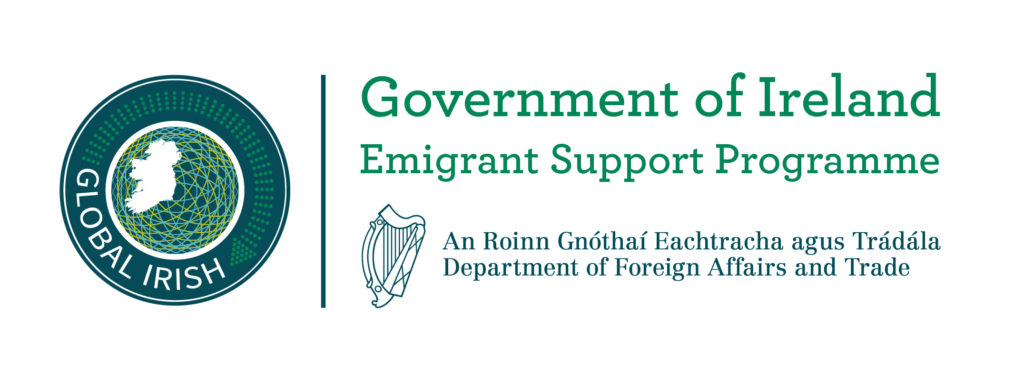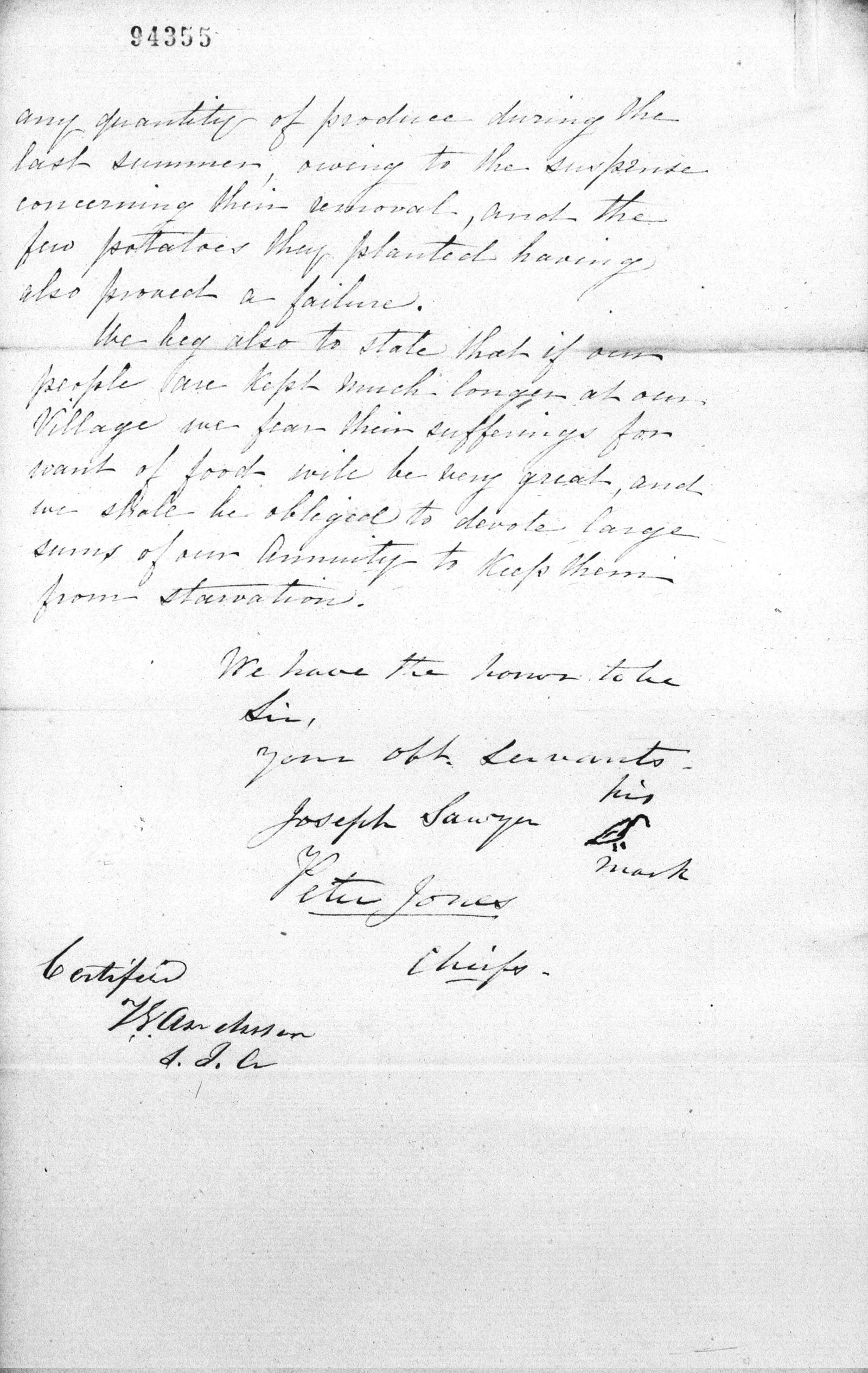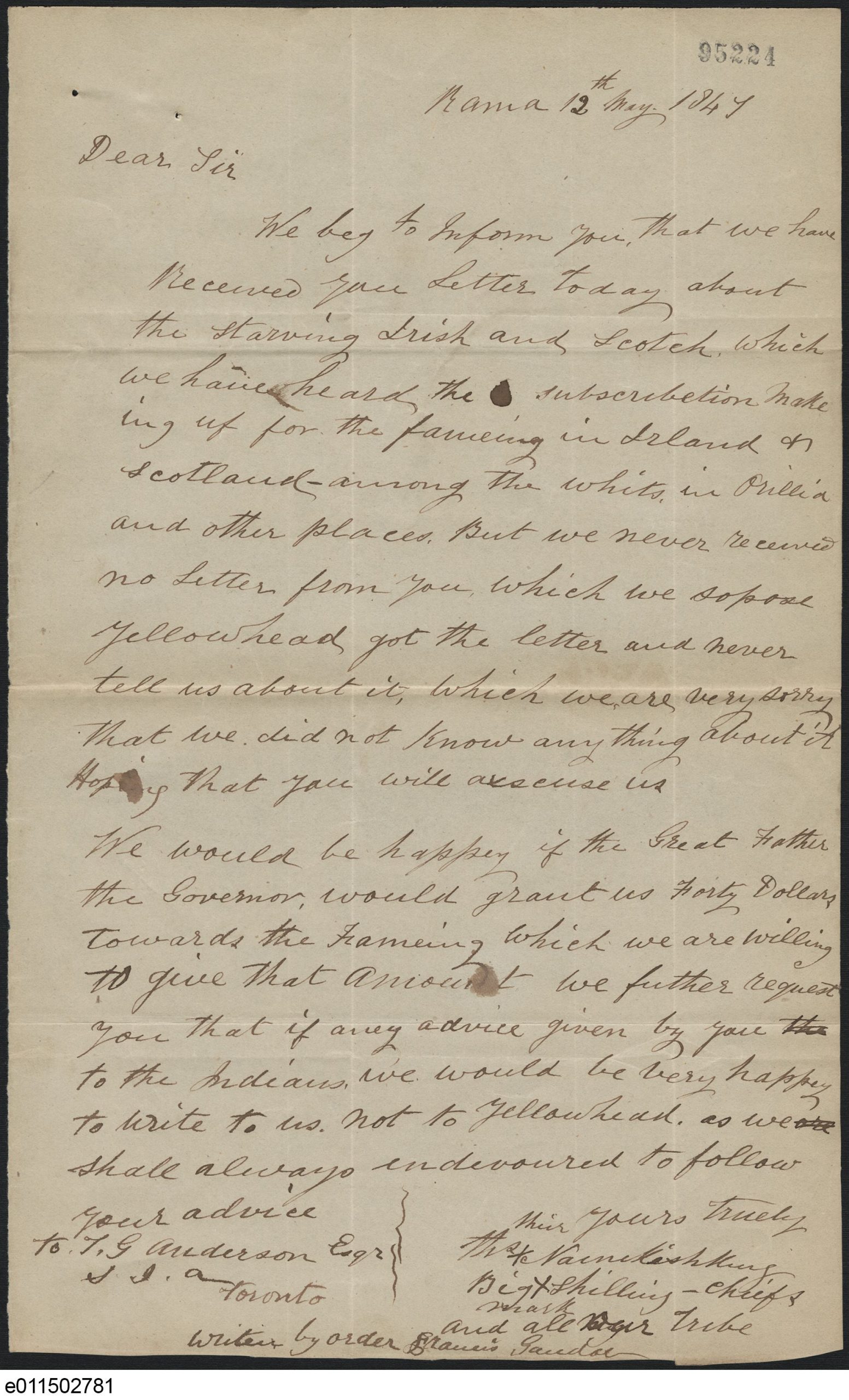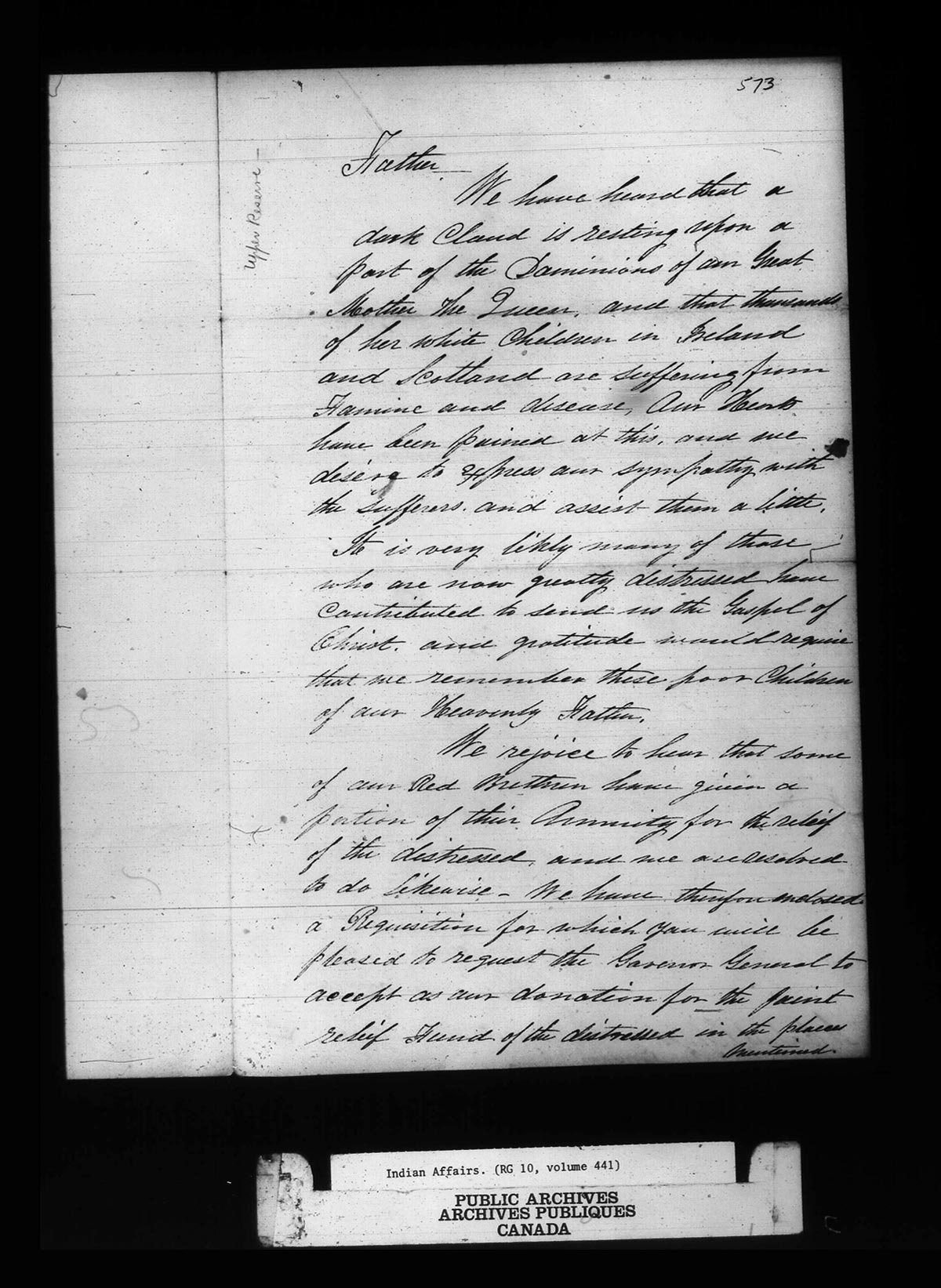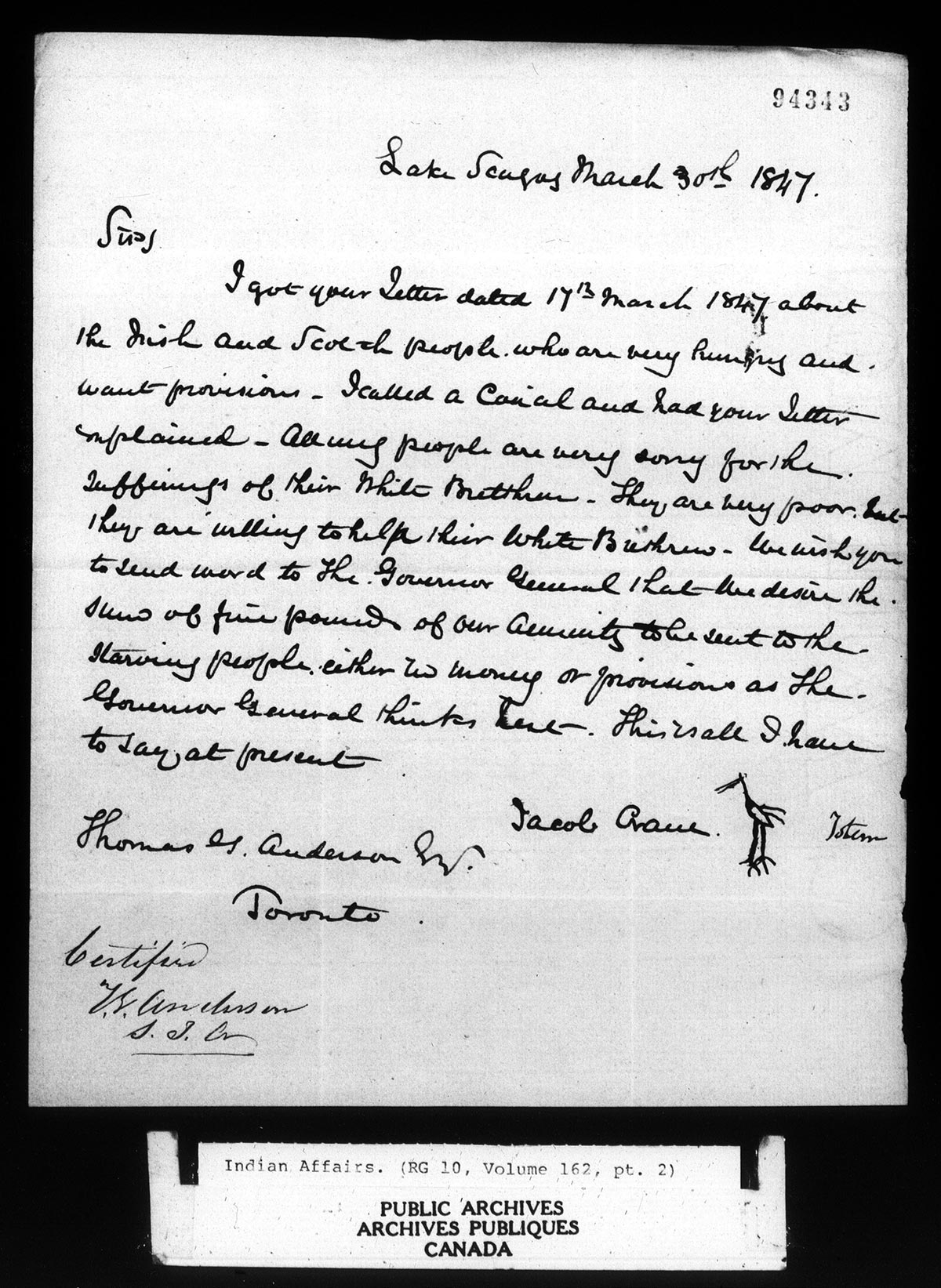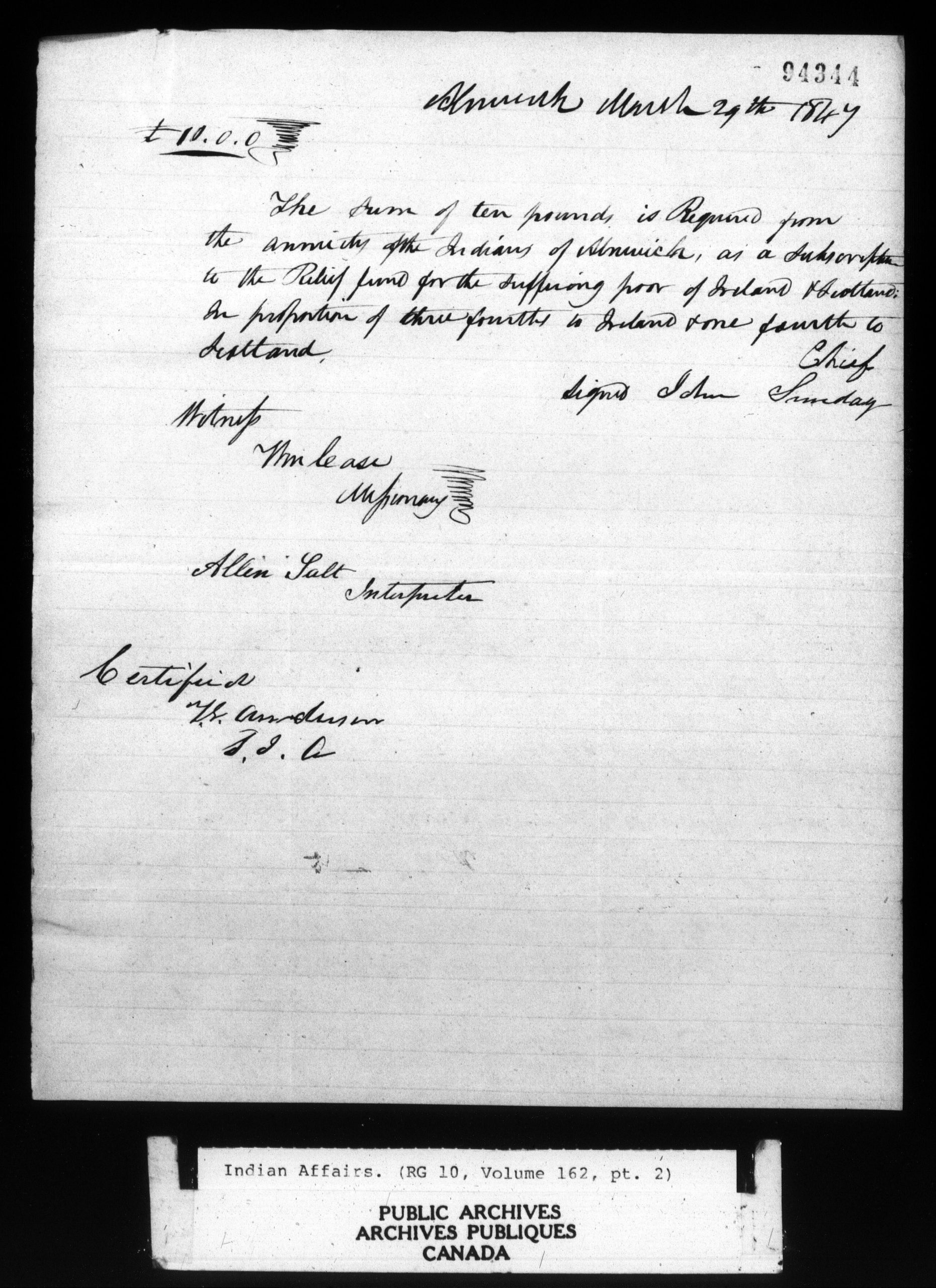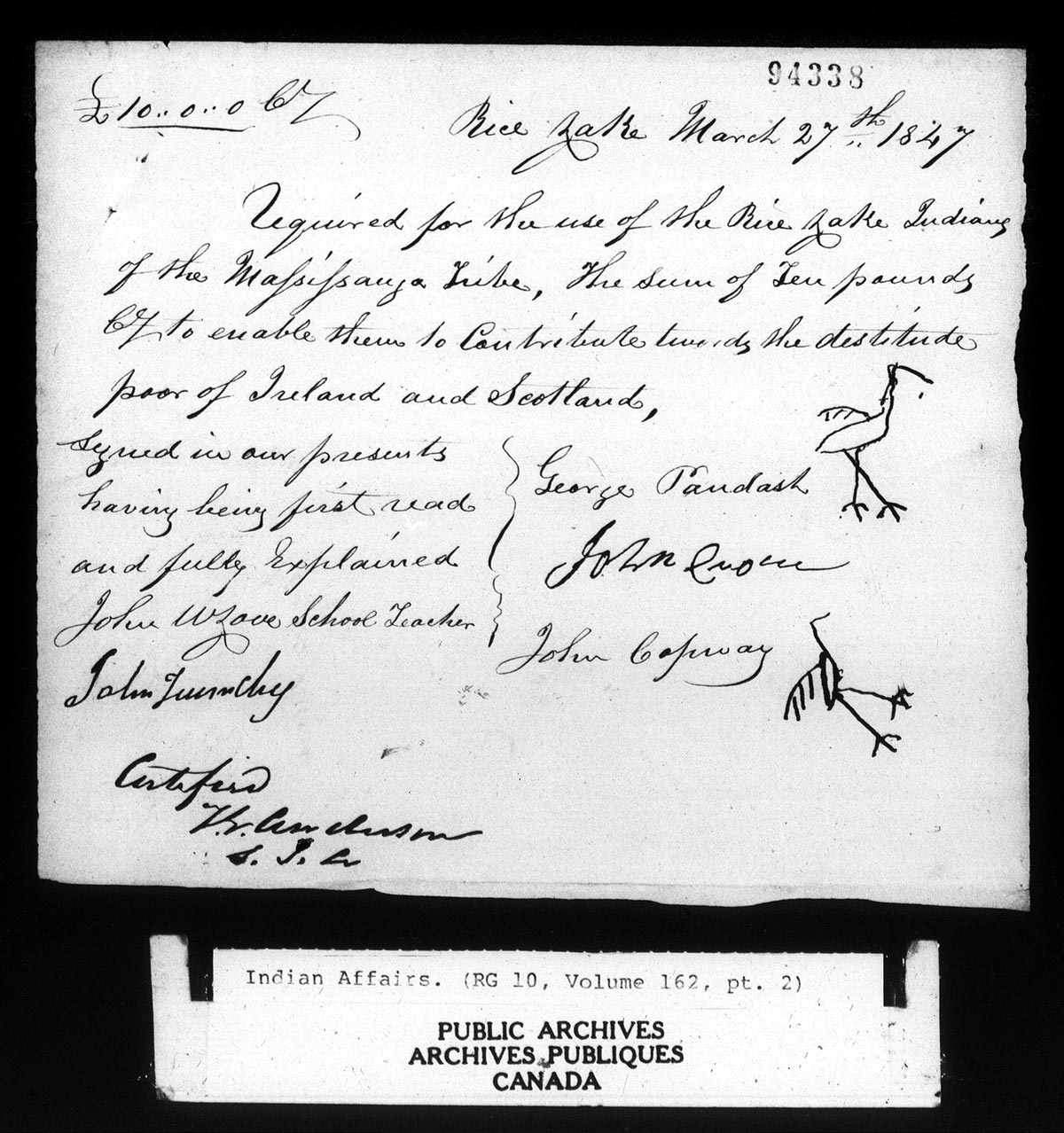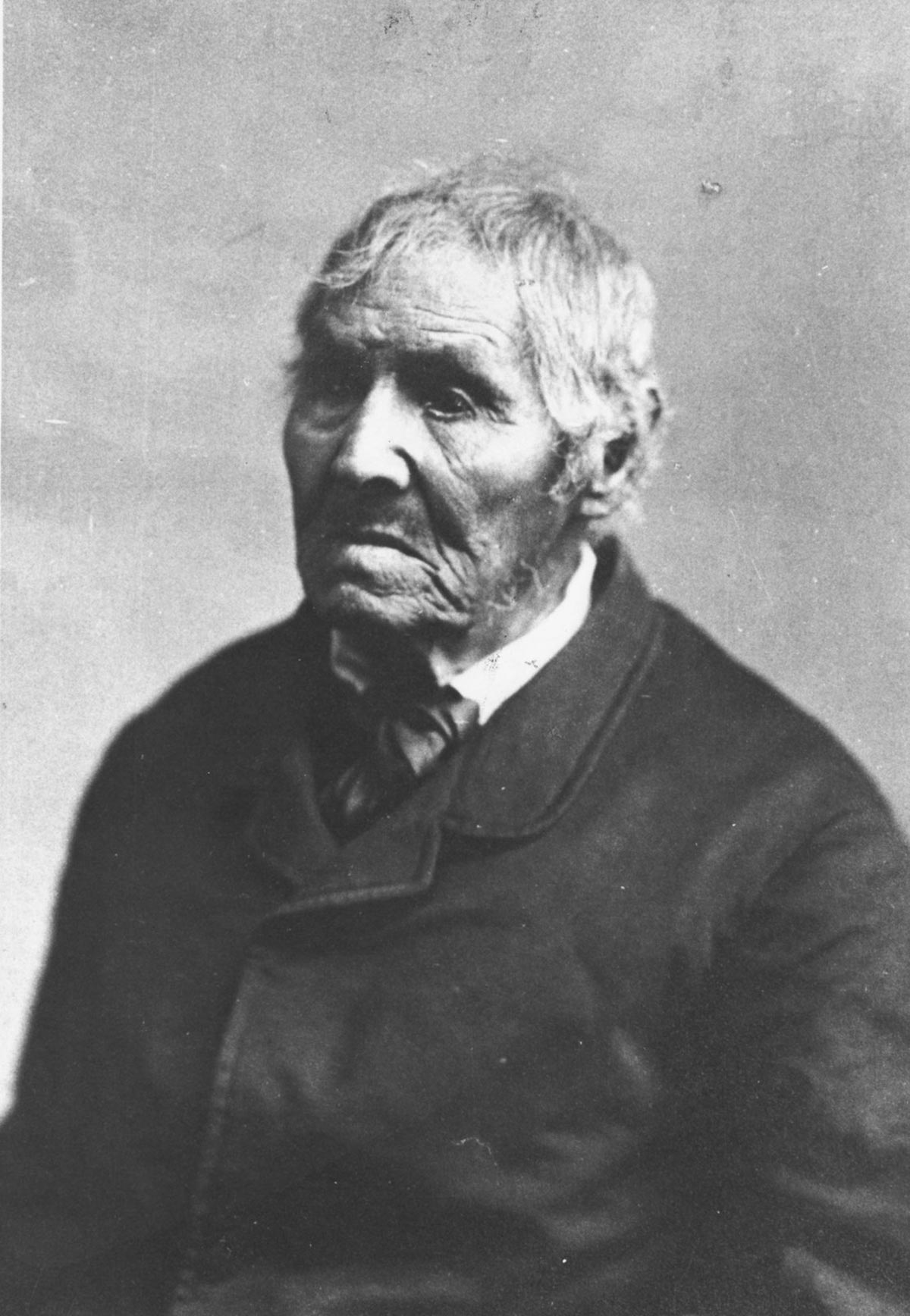This virtual exhibition pays tribute to the Anishinaabe, Haudenosaunee & Huron-Wendat Indigenous peoples in Canada West (now Ontario) and Choctaw and Cherokee Nations in Indian Territory (now Oklahoma) who contributed to Irish Famine relief in 1847.
It features newly discovered archival records that contain detailed evidence of collective decision-making and deliberations in Council to provide aid for the Irish. The Anishinaabe letters are marked with their doodems (totems) that ratify treaty relations with other Indigenous peoples and the Crown. These donations were offered in the context of increasing settler encroachment when First Nations and Native Americans were facing considerable privation and broken treaty relations.
Bronze Shoes and Moccasins: First Nations and Famine Irish Forced Migration
Bronze Shoes and Moccasins: First Nations and Famine Irish Forced Migration tells the story of the Mississaugas of the Credit First Nation that generously contributed to Irish Famine Relief in Canada West on 22 March 1847, even while they were being removed from their homes without knowing where they would resettle. The film also explores the role of European settlers, including the mass influx of Famine Irish emigrants, in dispossessing Indigenous peoples from their land.
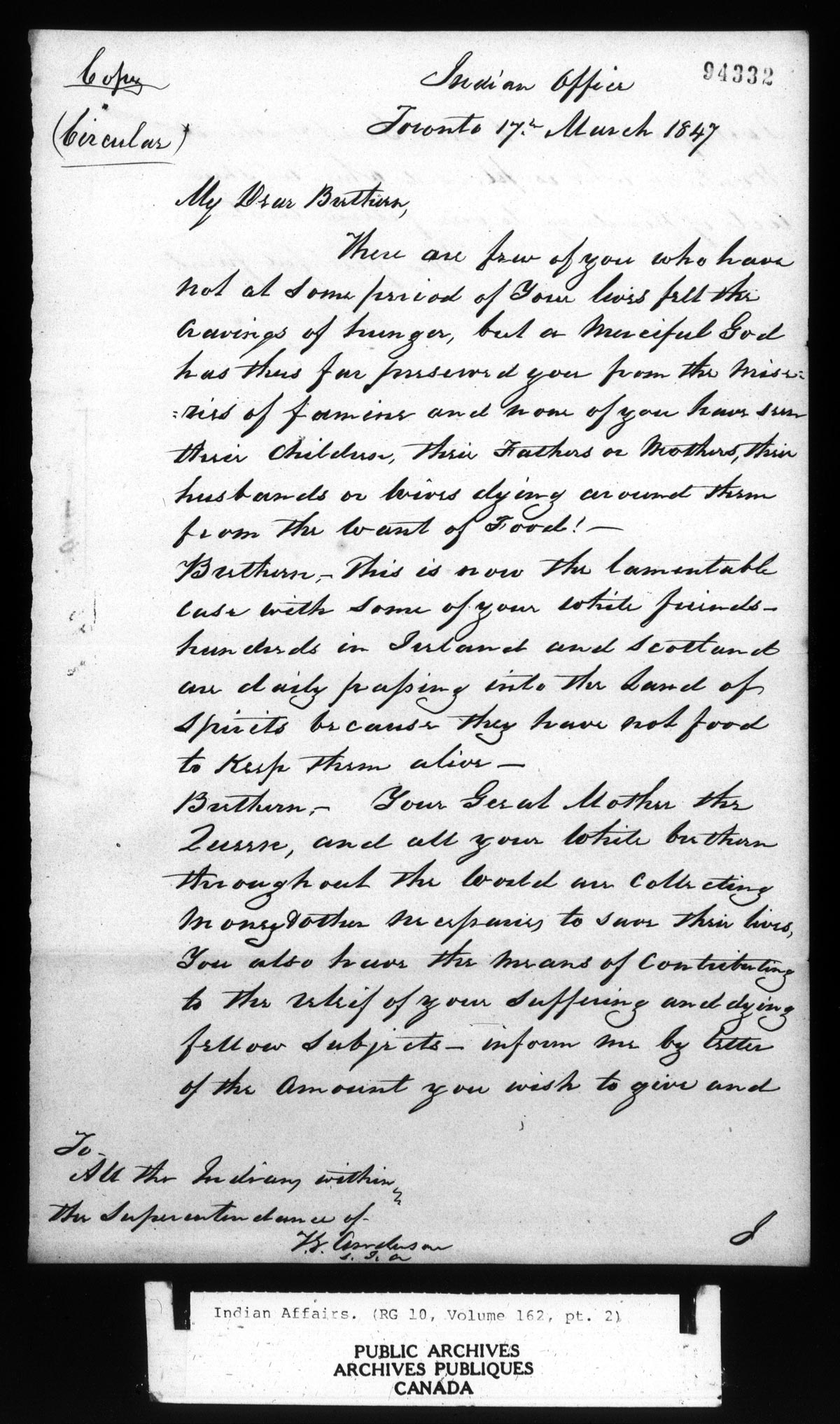
Indian Agent Thomas Gummersall Anderson Circular 17 March 1847
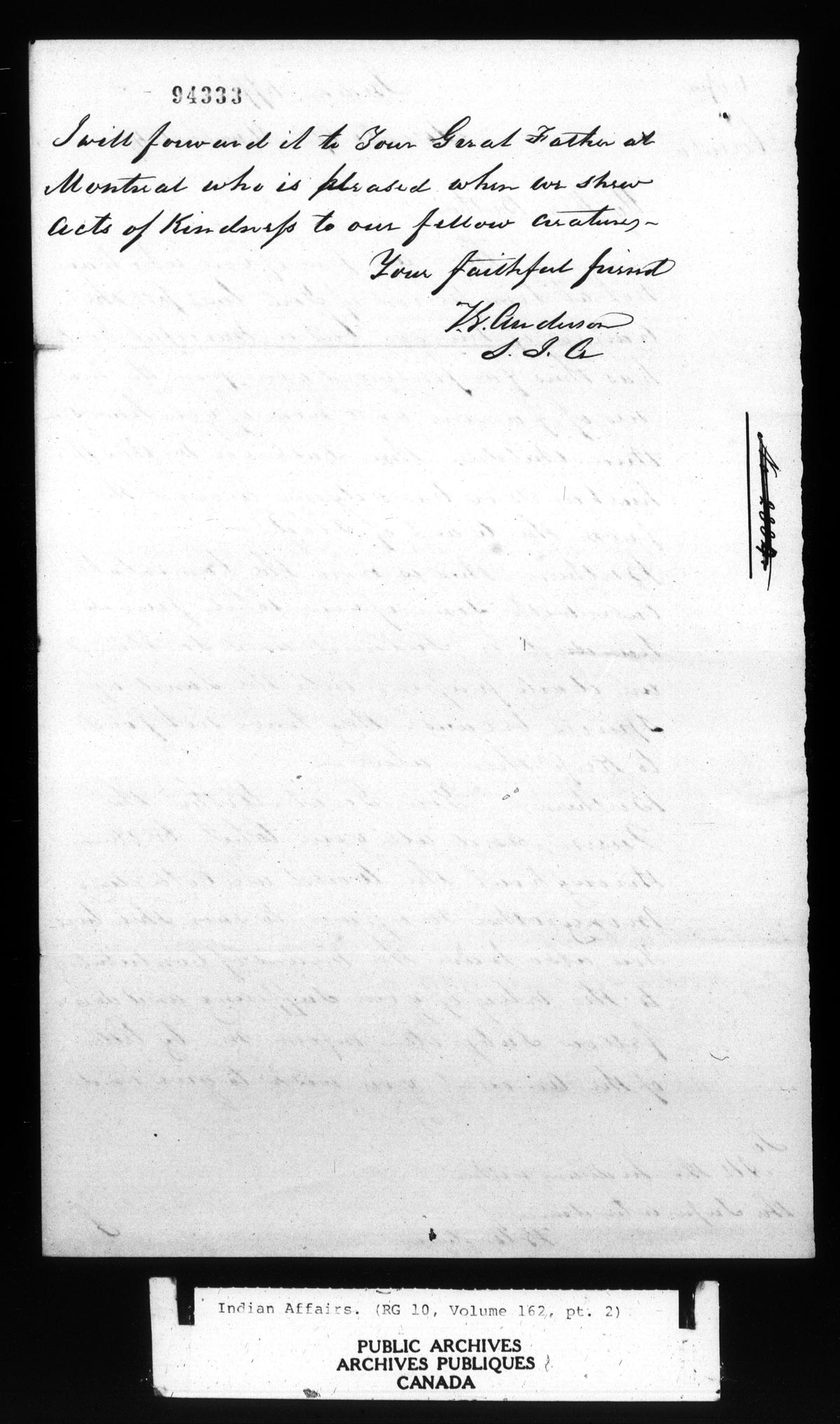
Anderson Circular Page 2
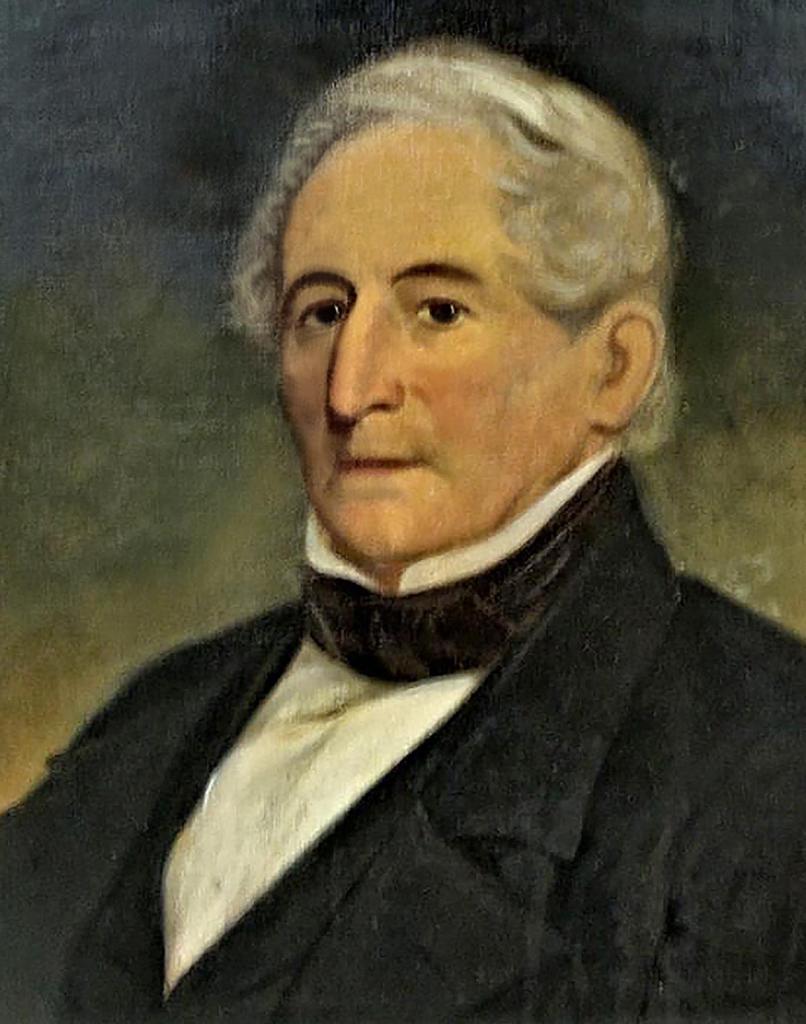
Indian Agent Thomas Gummersall Anderson St. Patrick’s Day Circular Soliciting Donations for Irish Famine Relief from Indigenous Peoples in Canada West
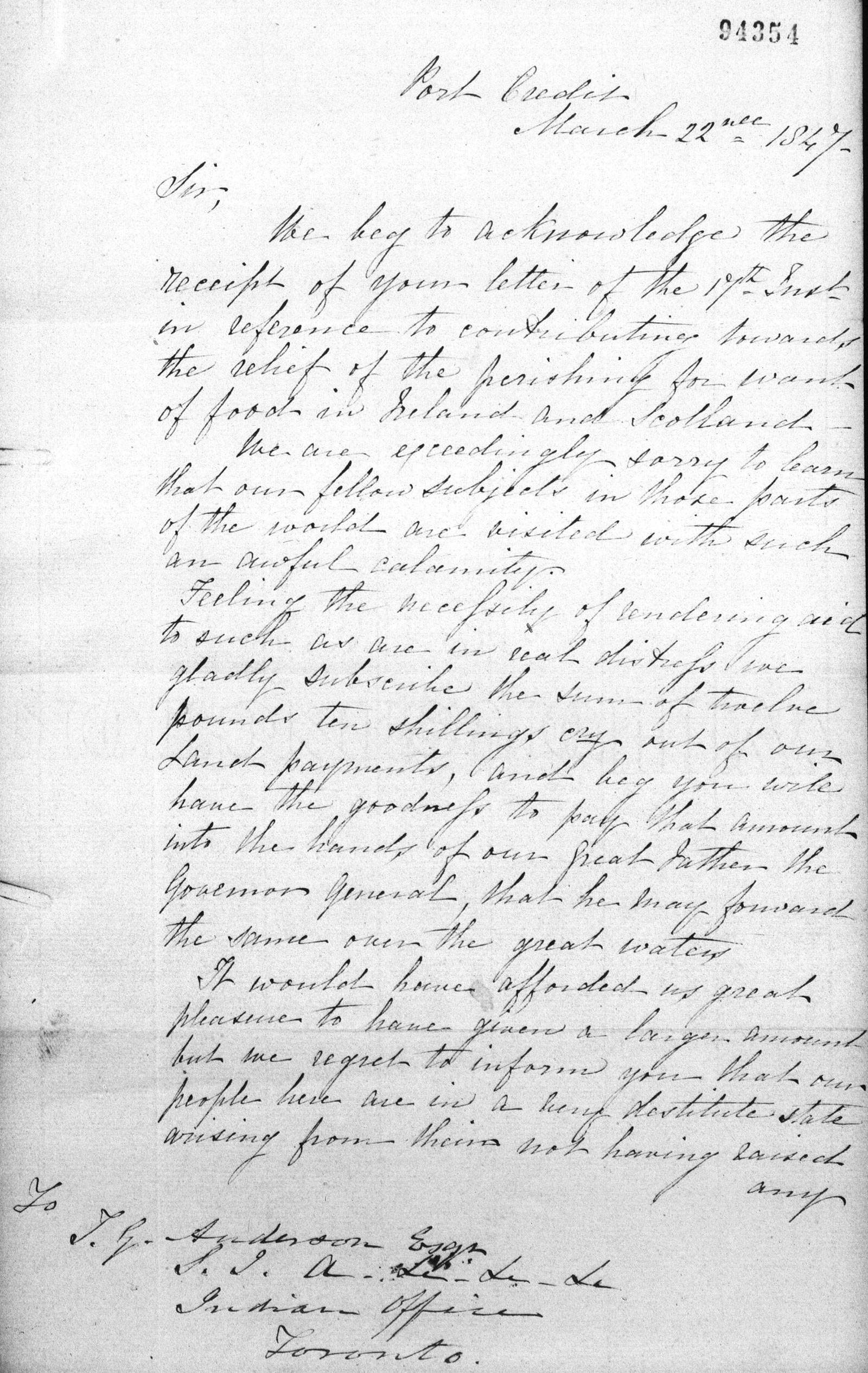
Mississagaugas of the Credit Famine Relief Letter March 22 1847
Bronze Shoes and Moccasins features renowned Indigenous artist Philip Cote unveiling his painting entitled Sacred Feathers to commemorate the gift.
The painting pays tribute to Chiefs Peter Jones (also known as Kahkewaquonaby, or Sacred Feathers) and Joseph Sawyer (also known as Newechekeshequeby, or Sloping Sky) who contributed to Irish Famine relief on behalf of their people. It is rendered in the Anishinaable Woodlands Style with a subtle Irish motif. The film also spotlights Akwesasne artist Cheyenne Lazore who created a ribbon skirt with Irish symbols to honour Ireland Lacrosse for ceding its place so that the Iroquois Nationals could play in the 2022 World Games.
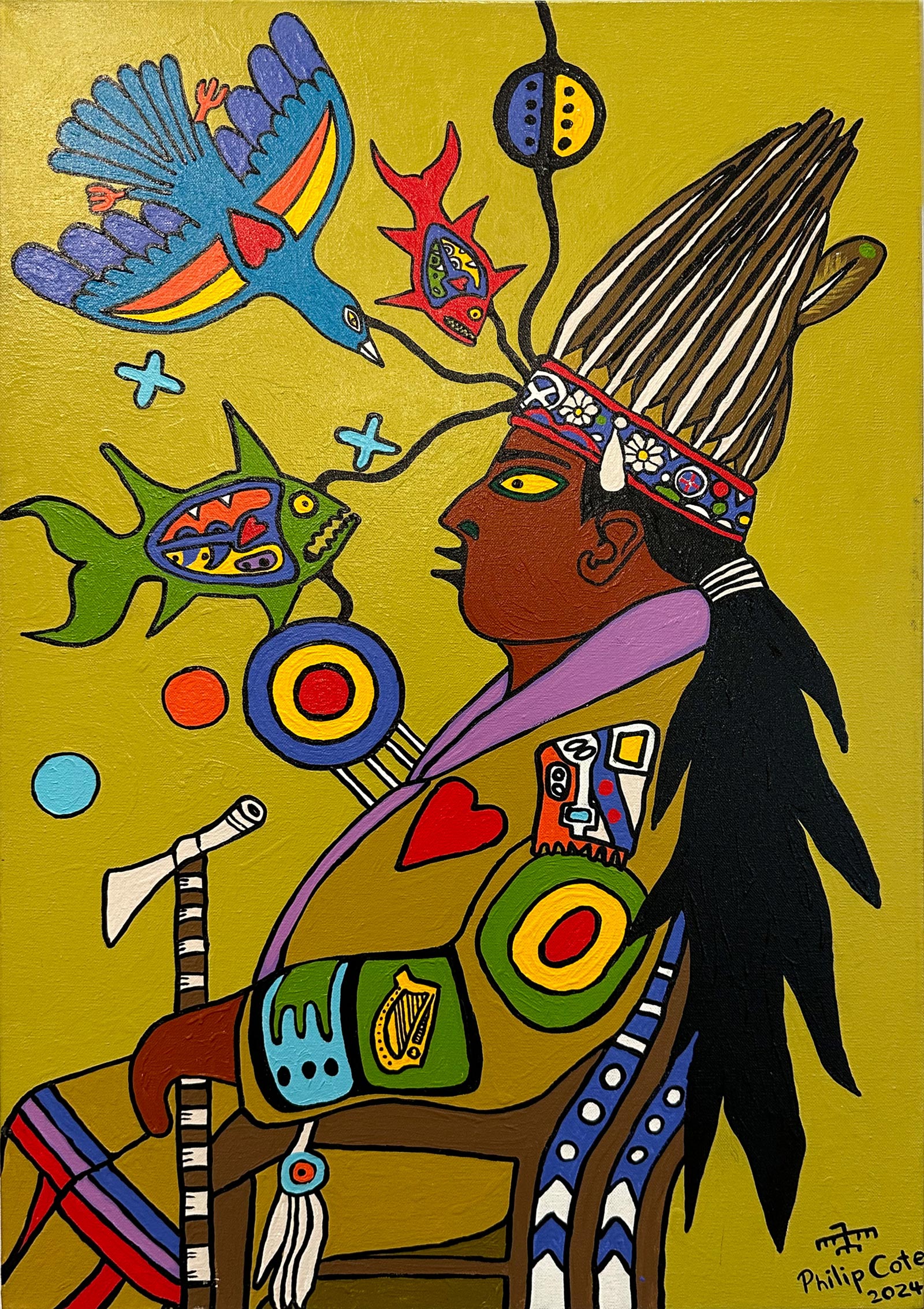
Philip Cote, Sacred Feathers
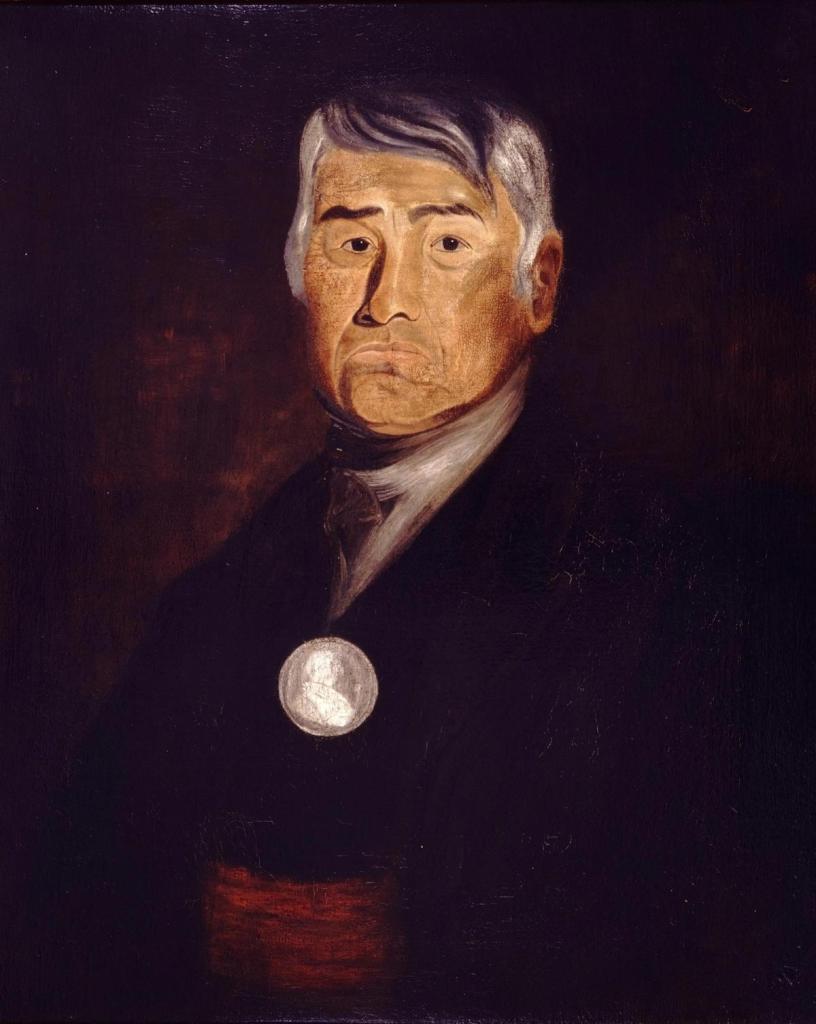
Chief Joseph Sawyer
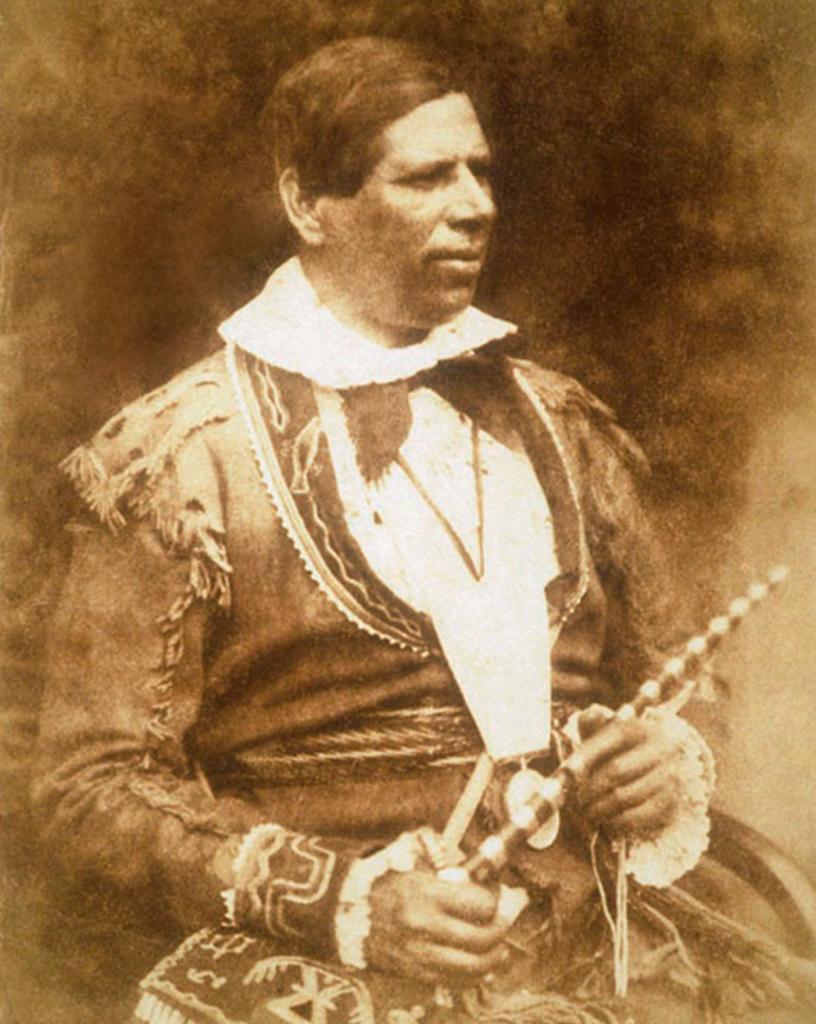
Chief Peter Jones in 1845
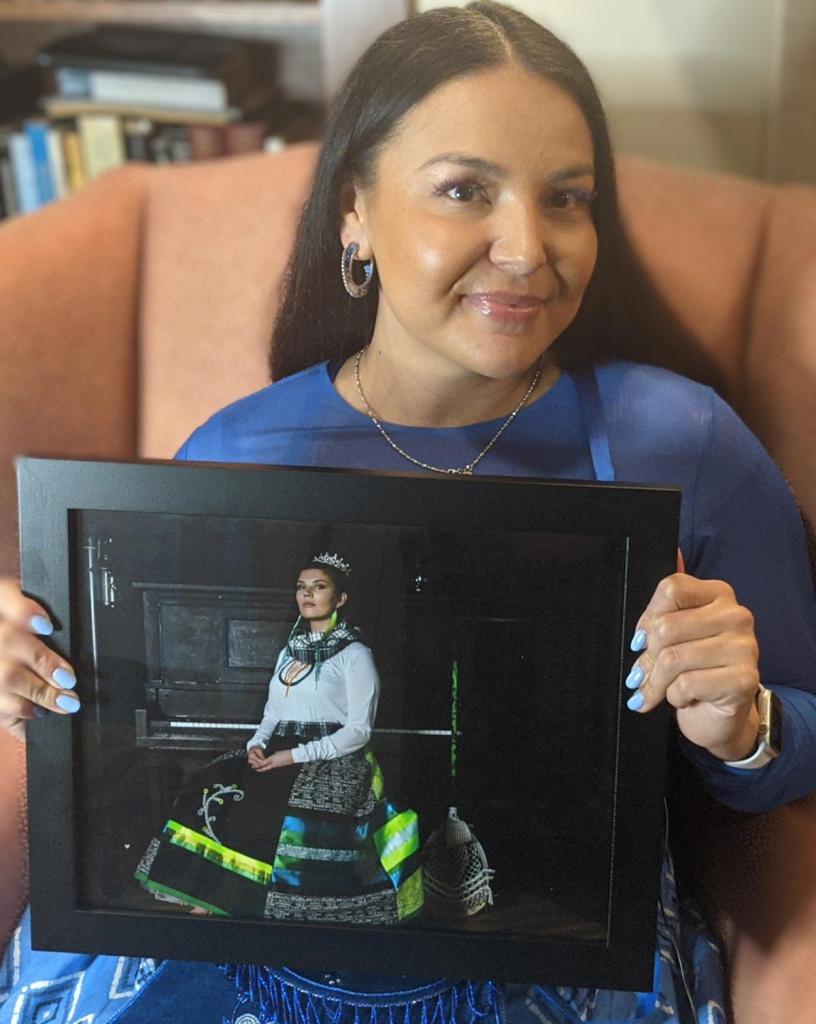
Designer Cheyenne Lazore with a photograph of Sky Timmons wearing the Ribbon Skirt that she created.
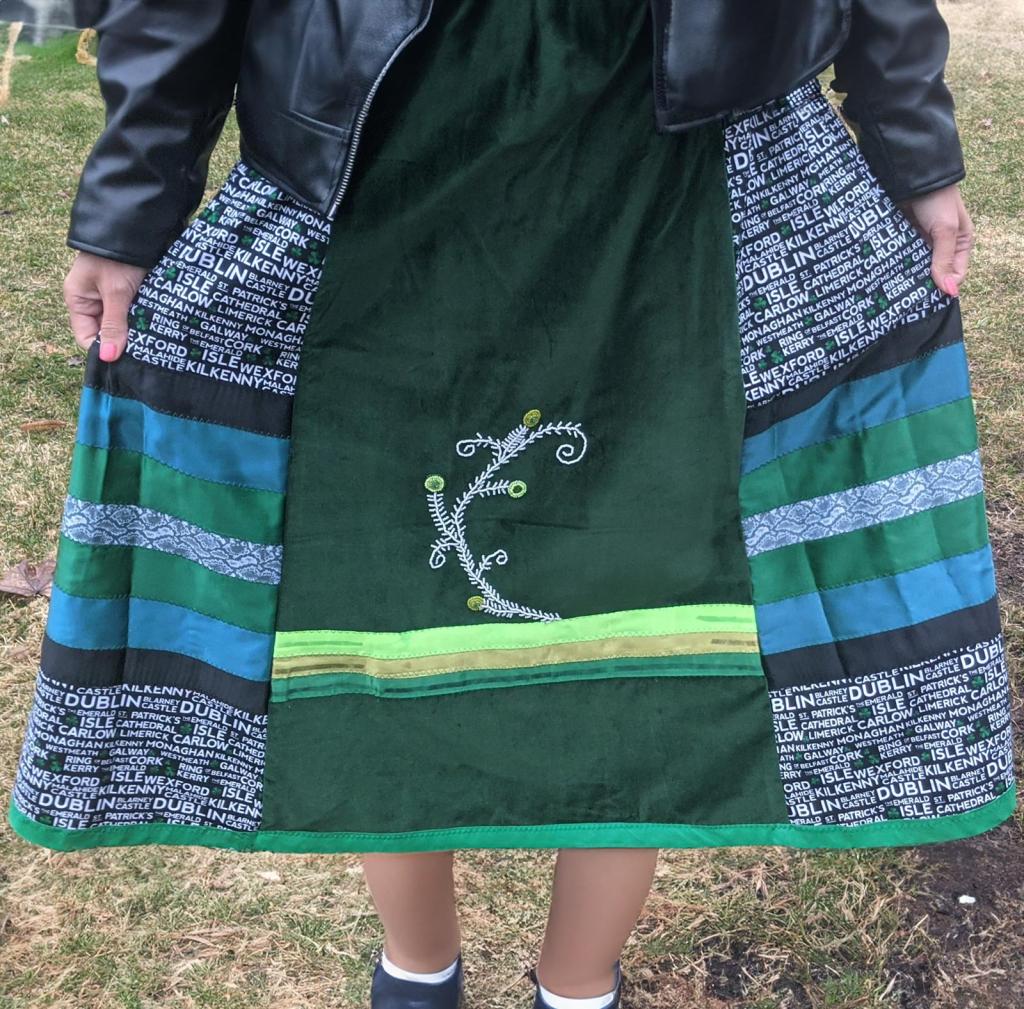
Cheyenne Lazore Ribbon Skirt Detail
Honouring Anishinaabe, Haudenosaunee & Huron-Wendat Indigenous Aid
Honouring Anishinaabe, Haudenosaunee & Huron-Wendat Irish Famine Aid pays tribute to the Indigenous peoples in Canada West (now Ontario) who contributed to Irish Famine relief in 1847. Based on newly discovered archival records, it tells the story of their efforts to help alleviate Irish hunger. The film features Indigenous descendants from donor communities in Ontario reflecting on the compassion of their ancestors. They had donated over £170 in response to a plea for aid from Indian Agent Thomas Gummersall Anderson on St Patrick’s Day, 1847.
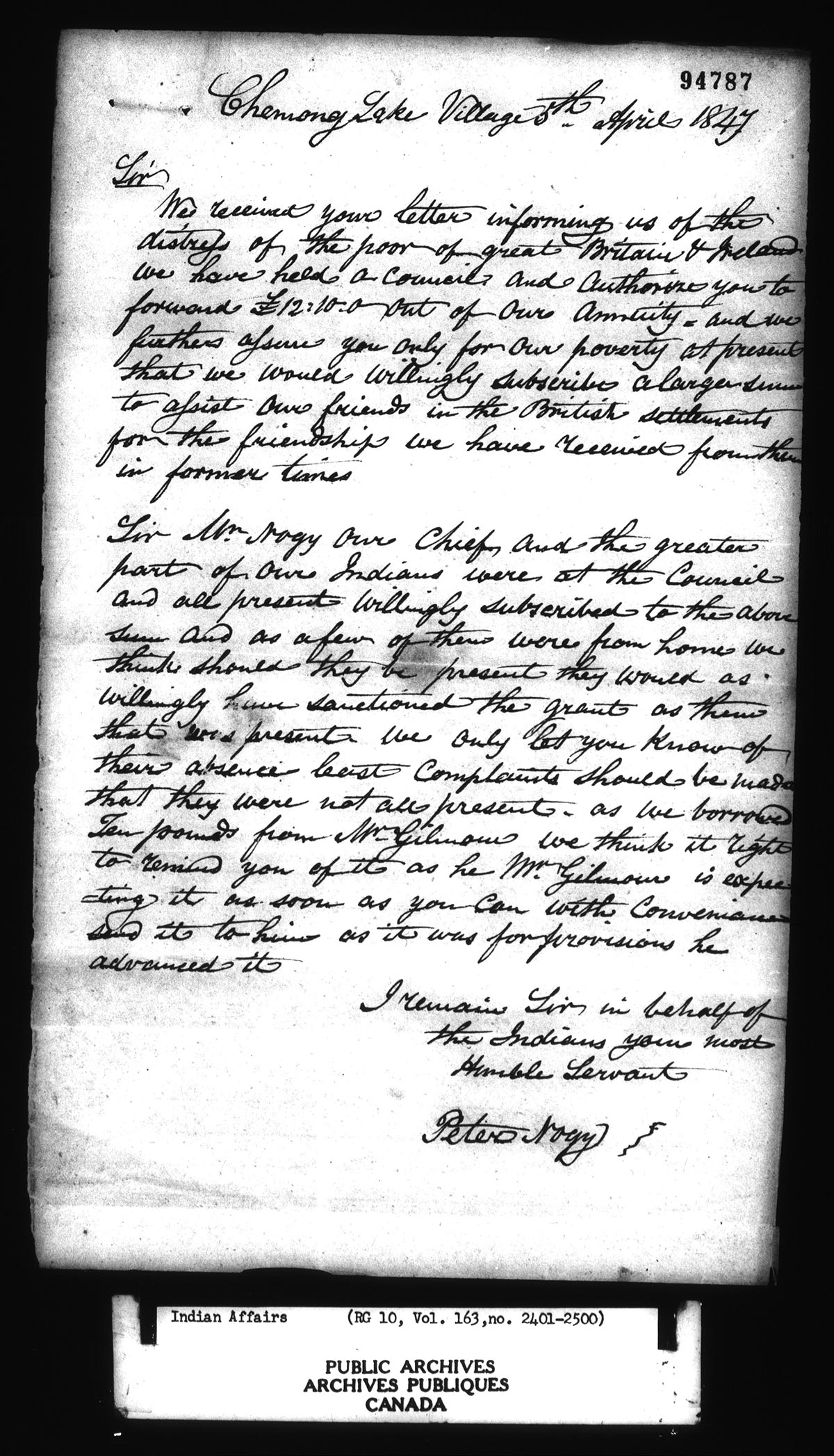
Chemong Curve Lake Letter Irish Famine Relief April 5 1847
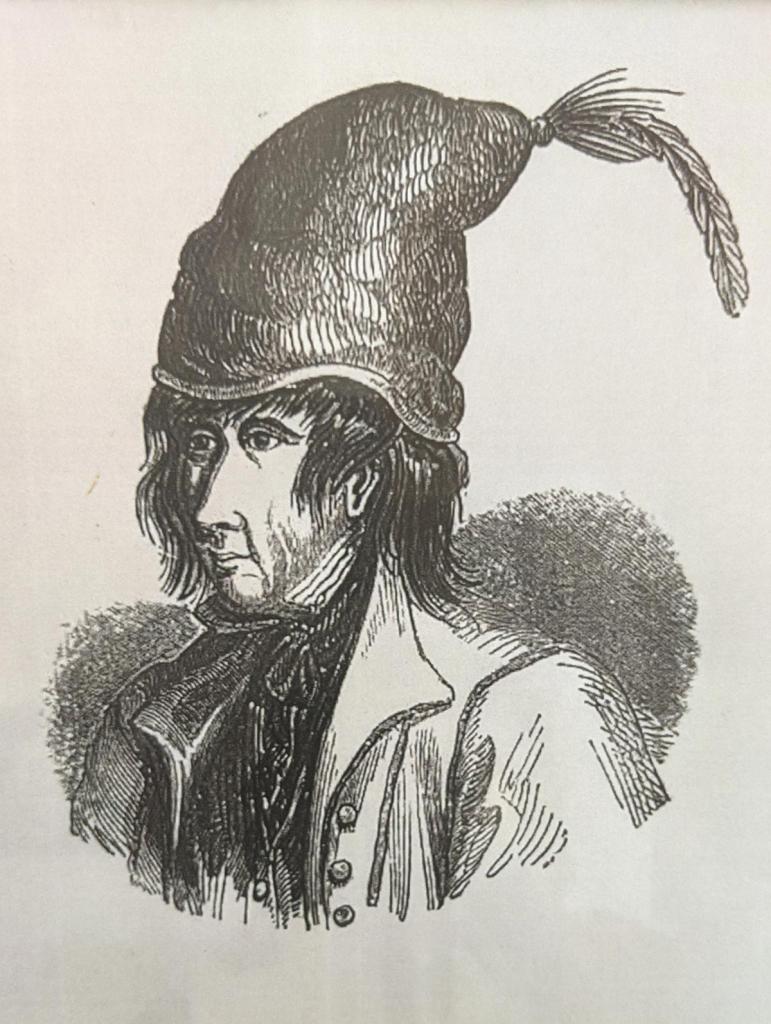
Chemong Lake Chief Peter Nogy wrote of “the friendship we have received from” Irish settlers “in former times”.
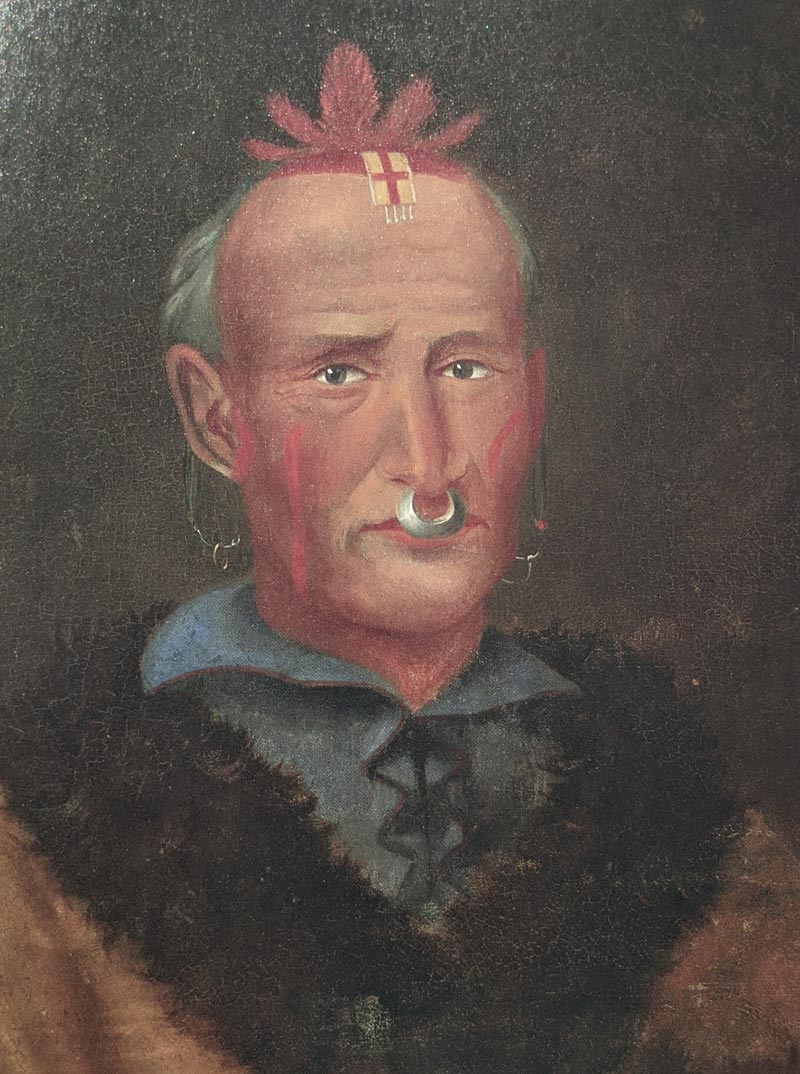
Paul Kane “Ojibbeway Chief” painting. The Ojibwa of Saugeen Lake contributed to Irish Famine relief.
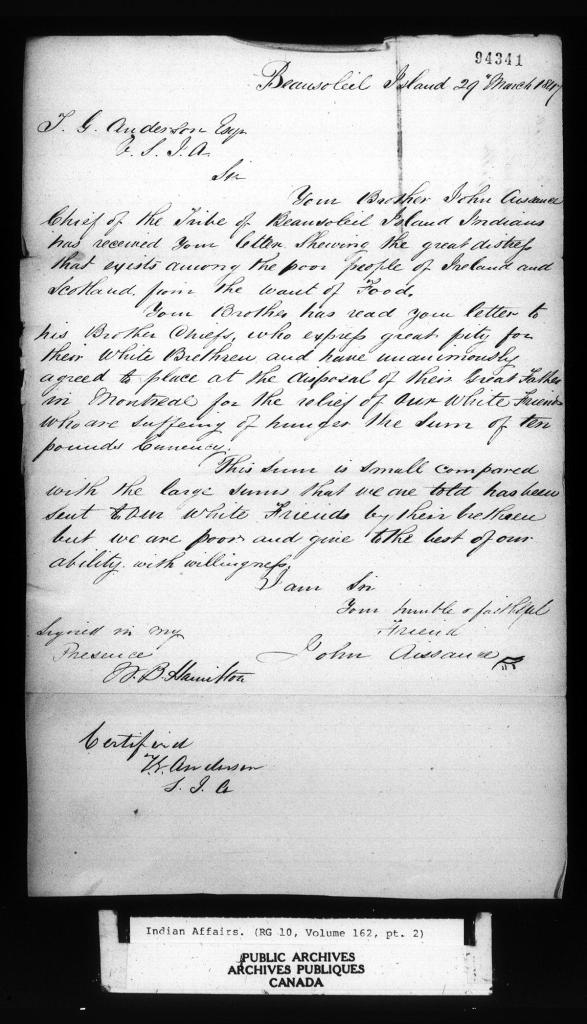
Beausoleil Island Famine Relief letter March 29 1847
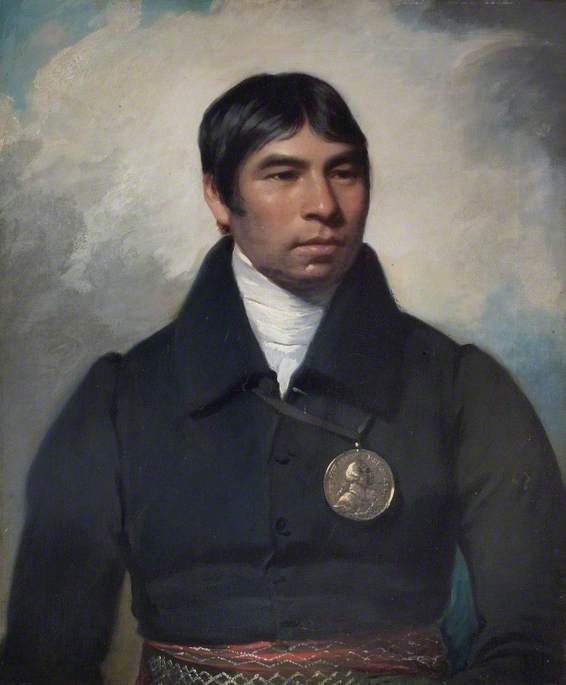
Alnwick Chief John Sunday contributed to Irish Famine Relief
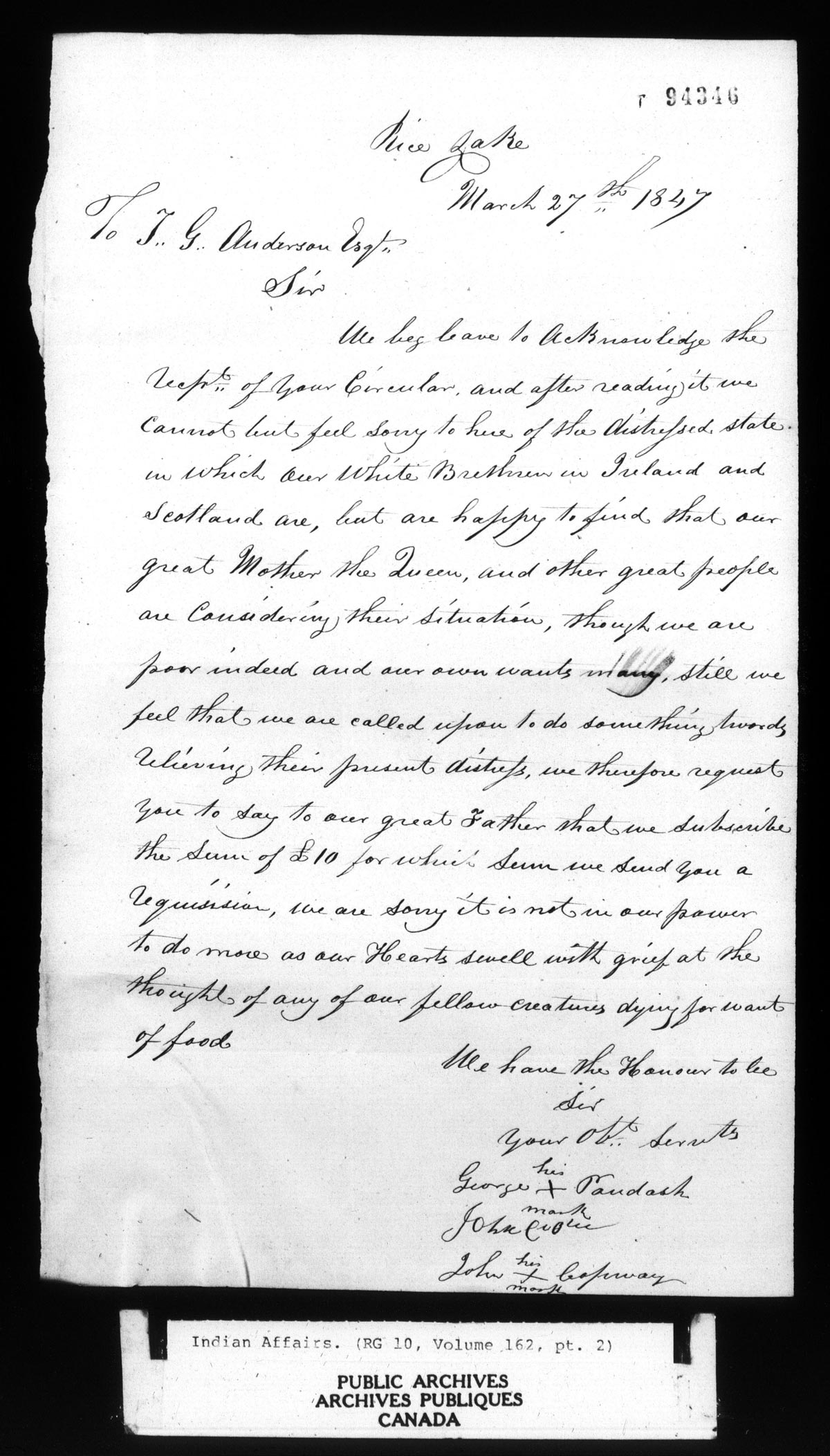
Rice Lake Famine Relief letter detailed March 27 1847
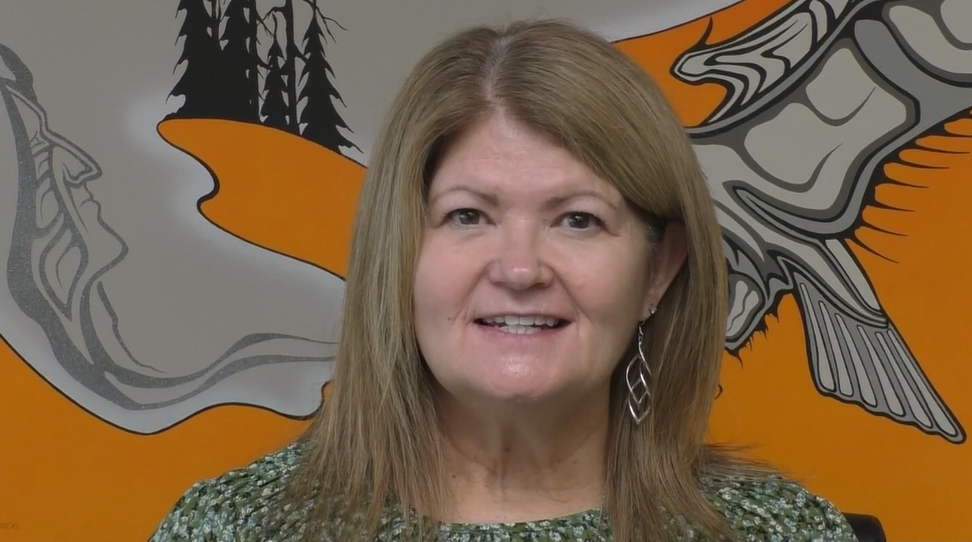
Hiawatha Chief Laurie Carr is descended from Rice Lake Chief George Paudash
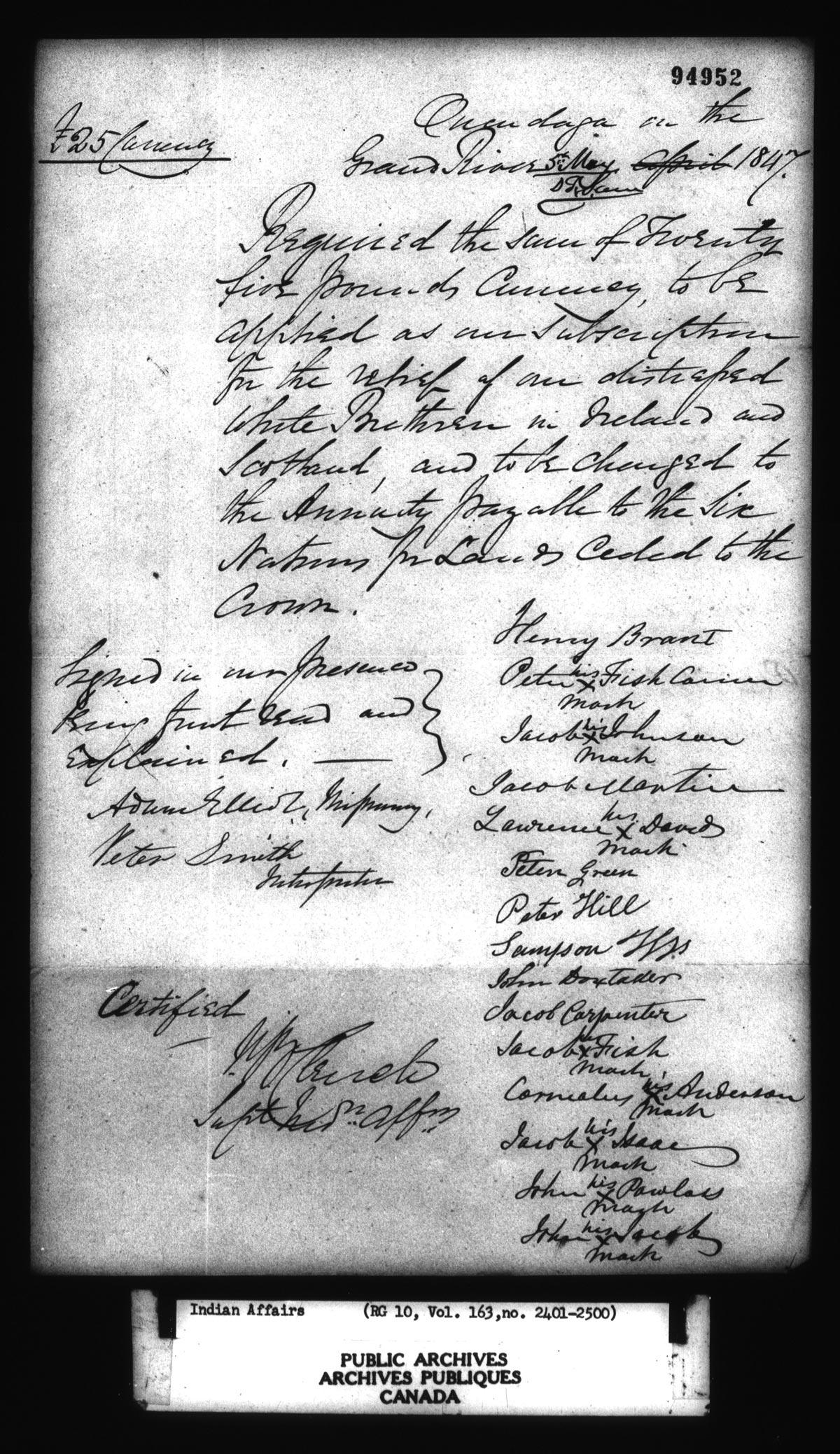
Six Nations of the Grand River Famine Relief letter cover May 5 1847
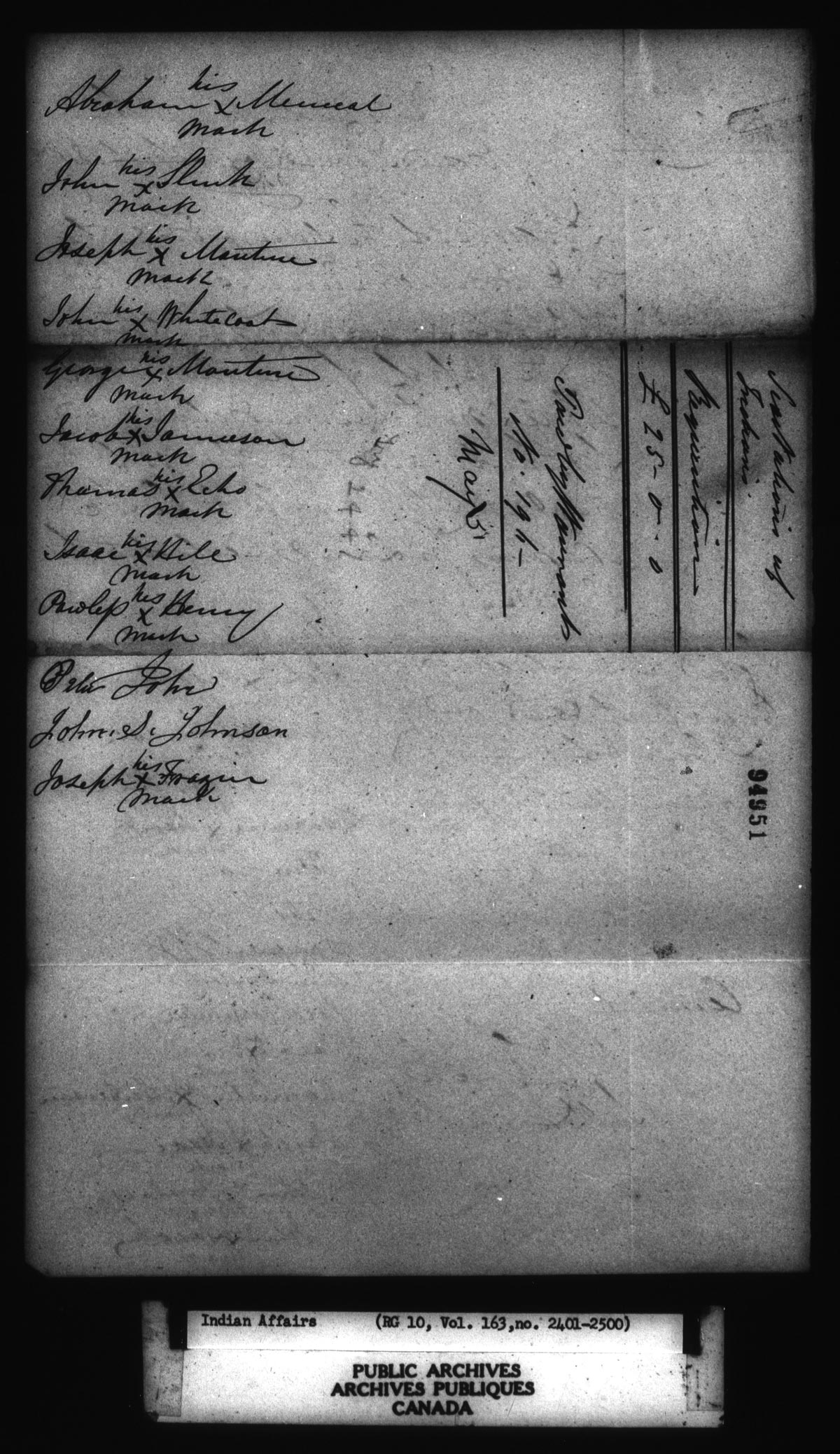
Six Nations of the Grand River Famine Relief letter cover May 5 1847
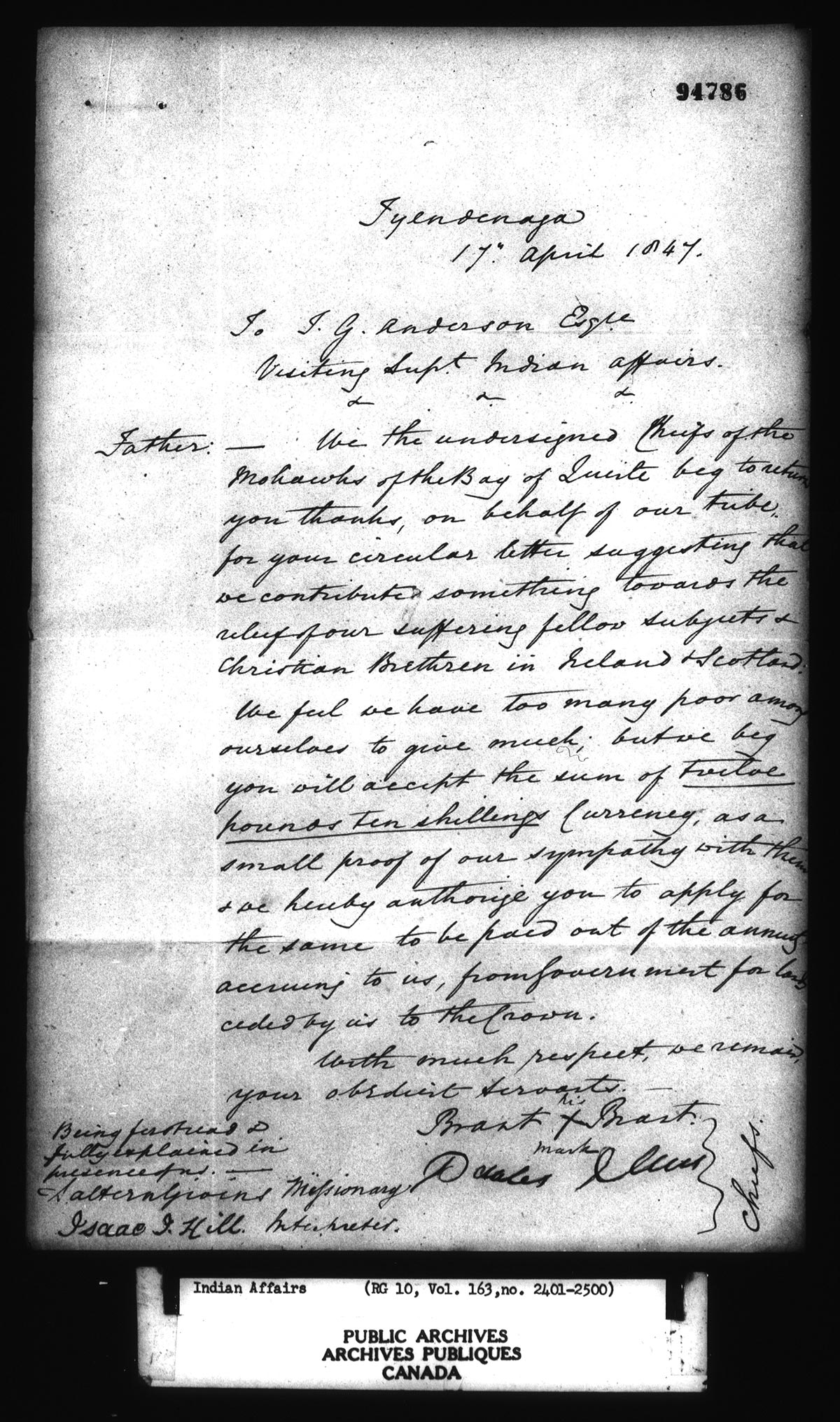
Tyendinaga Famine Relief Letter 17 April 1847. The letter has been translated into Mohawk by Nathan Brinklow (Thanyehténhas) from Tyendinaga Mohawk Territory.
Honouring Indigenous Famine Aid from Quebec and Ireland Lacrosse
Honouring Indigenous Famine Aid from Quebec and Ireland Lacrosse pays tribute to the Mohawk First Nation of Kahnawà:ke, the Abenaki First Nation of Odanak, and the Huron-Wendat First Nation of Wendake in Canada East— now Quebec— that contributed to Irish Famine relief in 1847. Their donations were offered in Catholic religious ceremonies that were syncretically blended with Indigenous artefacts, beliefs and cultural practices. Wampum belts were suspended over the altars in the Kahnawà:ke and Wendake churches to mark and seal these First Nations’ alliances with one another. The film also explores the role of wampum in helping create new alliances between Indigenous peoples and the Irish, such as when the Haudenosaunee Nationals lacrosse team presented Ireland Lacrosse with a Two Row wampum belt after they ceded their place so that the more highly ranked Haudenosaunee could compete in the 2022 World Games.

Rex Lyons of the Haudenonsaunnee Nationals and Onondaga Nation with Two Row Wampum Belt
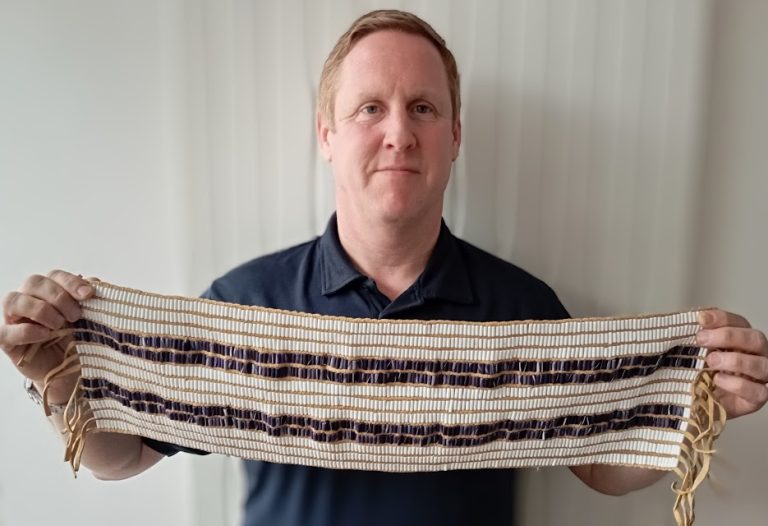
Ireland Lacrosse CEO Michael Kennedy with Two Row Wampum Belt presented by Haudenosaunee Nationals
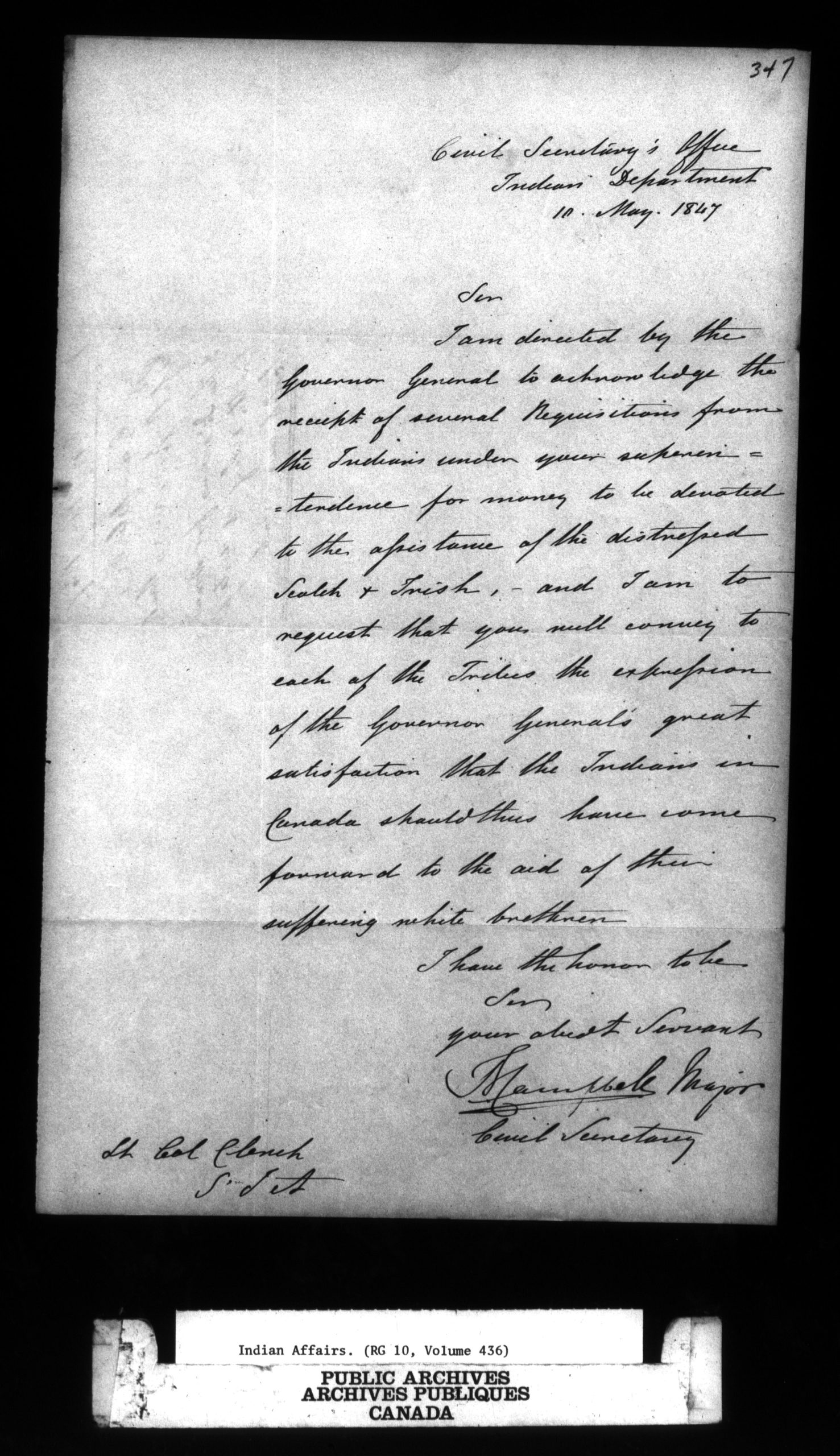
Governor General Lord Elgin Letter thanking Indigenous Peoples for Famine Aid May 10 1847
Governor General Lord Elgin Letter thanking Indigenous Peoples for Famine Aid 10 May 1847 Transcript
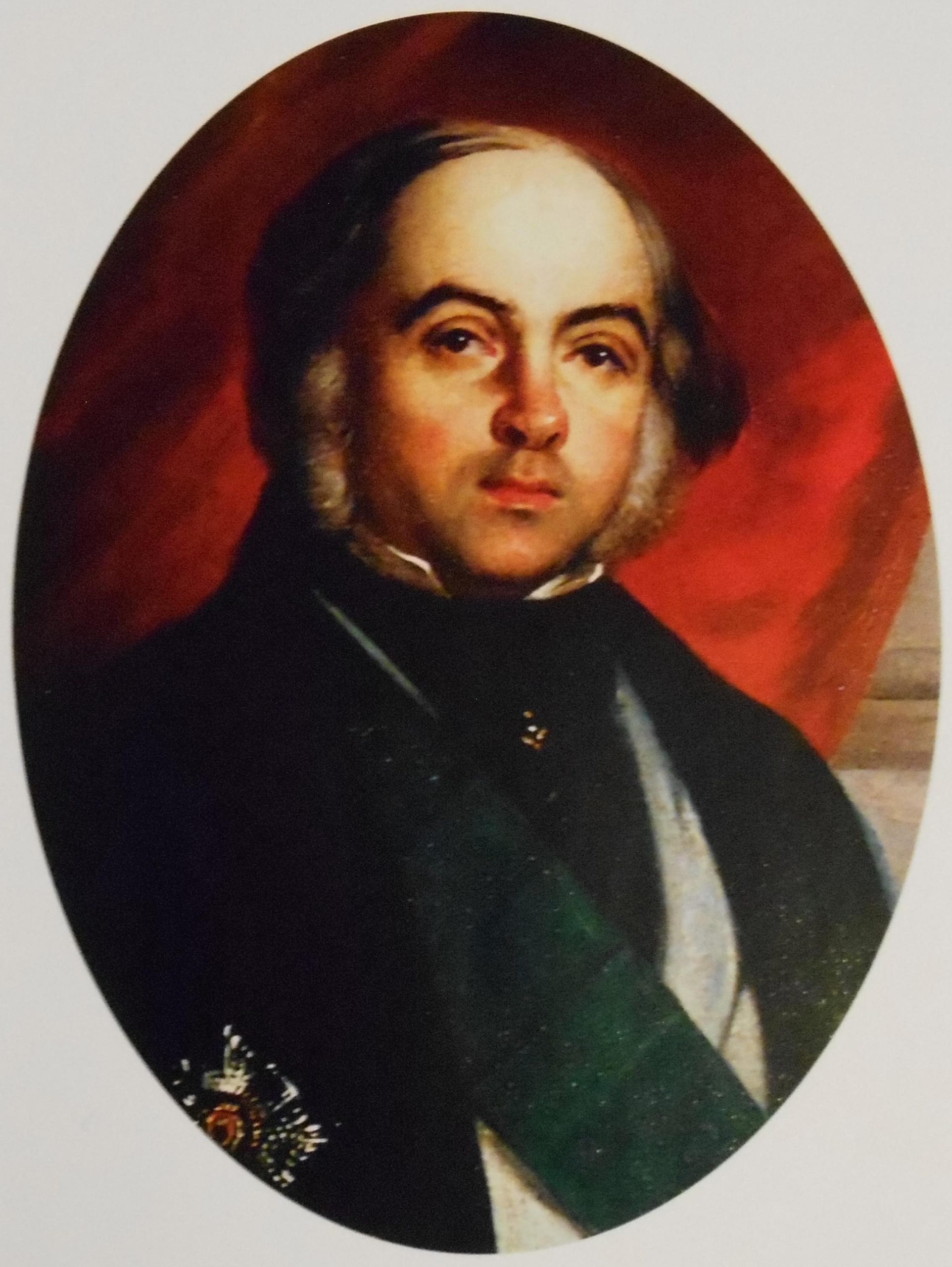
Governor General Lord Elgin thanked Indigenous Peoples for their contributions to Famine Relief on May 10, 1847
Honouring Choctaw and Cherokee Indigenous Aid
Honouring Choctaw and Cherokee Irish Famine Aid explores the archival record and artistic legacies of Native American contributions to help alleviate Irish suffering during the Great Hunger in 1847. The film features artistic works commemorating these Indigenous acts of giving such as the “Kindred Spirits” monument in Midleton, County Cork, Sam Guerrero Stitt’s “Eternal Heart” sculpture in the Choctaw Capitol Grounds in Tuskahoma, Oklahoma, and Brendan O’Neill’s “The Gift” in the Choctaw Cultural Center, Durant, Oklahoma, and the National Famine Museum, Strokestown Park. The film also features a performance of Steve Gardner’s musical adaptation “The Gift” based on LeAnne Howe and Doireann Ní Ghríofa’s “Singing Still: Libretto for the 1847 Choctaw Gift to the Irish for Famine Relief” that was performed at the National Famine Museum.
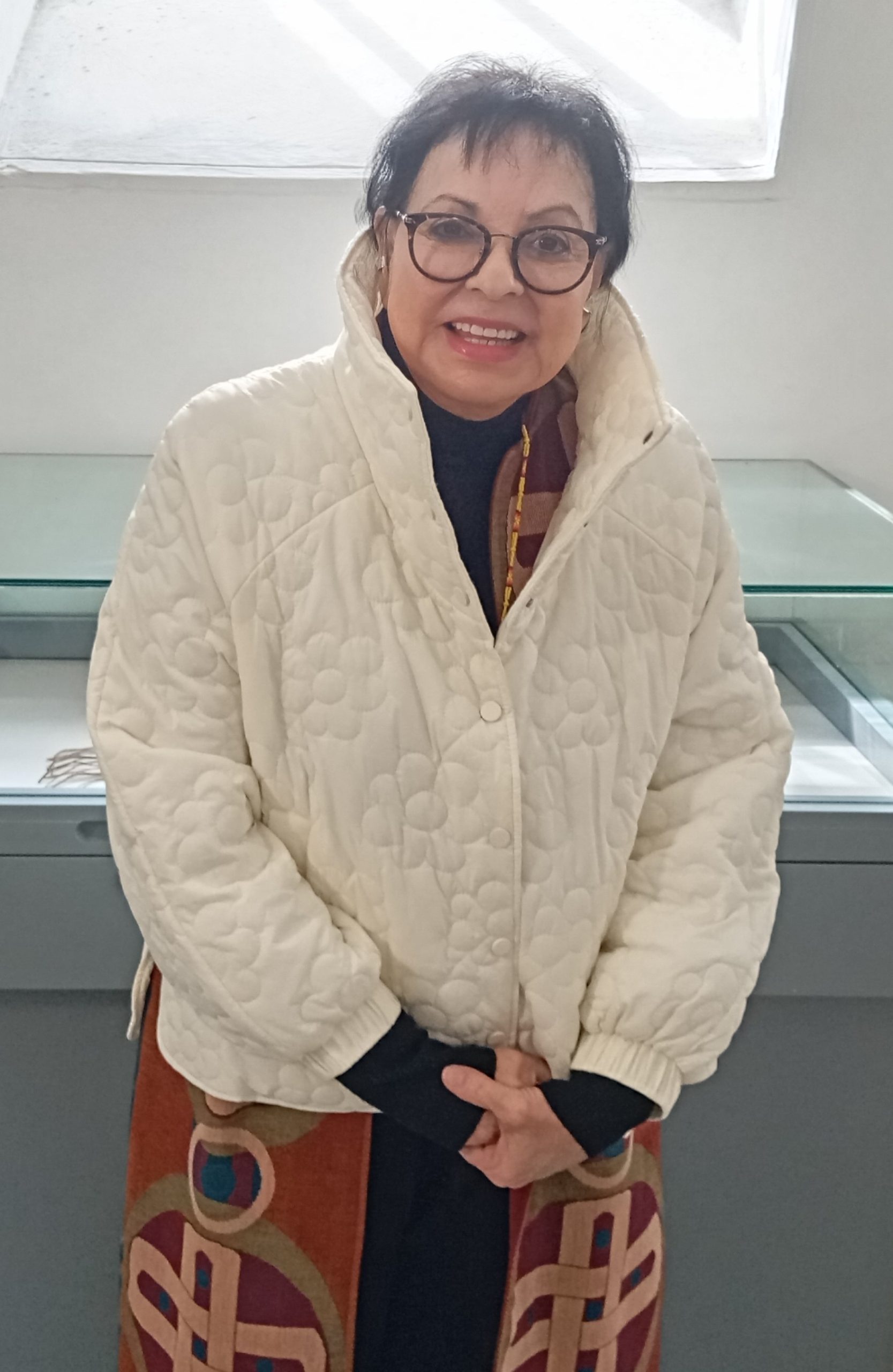
Choctaw Artist and Scholar LeAnne Howe at National Famine Museum
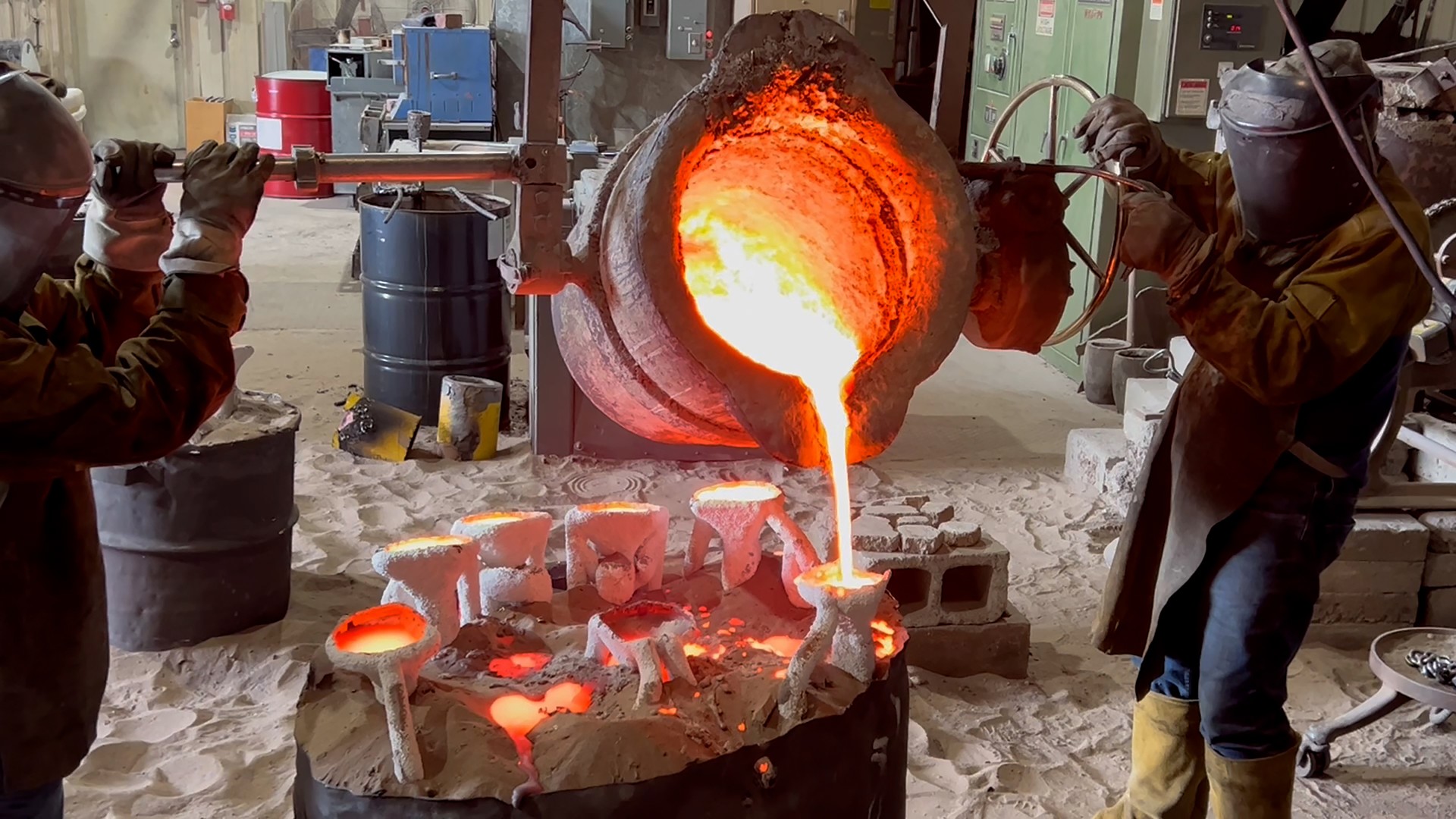
The casting of Brendan O’Neill’s sculpture “The Gift.”
Sharing Lands: Choctaw Irish Friendship and The Gift
Sharing Lands: Choctaw Irish Friendship and The Gift explores the lasting friendship that was forged between the Choctaw and the Irish as memorialized in works of art, including Samuel Stitt’s Eternal Heart and Brendan O’Neill’s The Gift sculptures that were unveiled at the Choctaw Cultural Center and the National Famine Museum, Strokestown Park. Members of the Choctaw Nation reflect on the enduring bonds that they have formed with the Irish and legacy of their ancestors’ generosity.
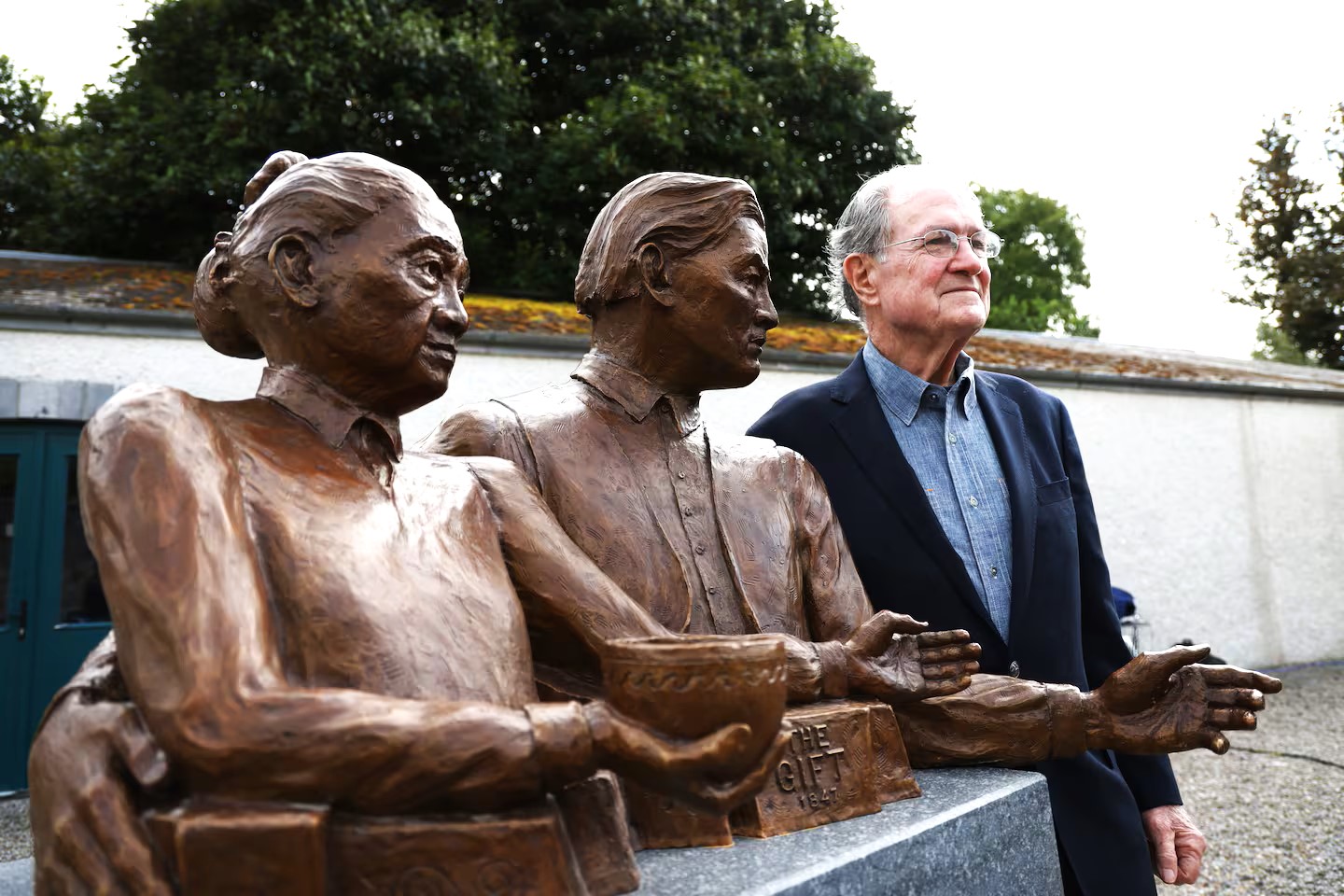
Sculptor Brendan O’Neill and “The Gift”, National Famine Museum
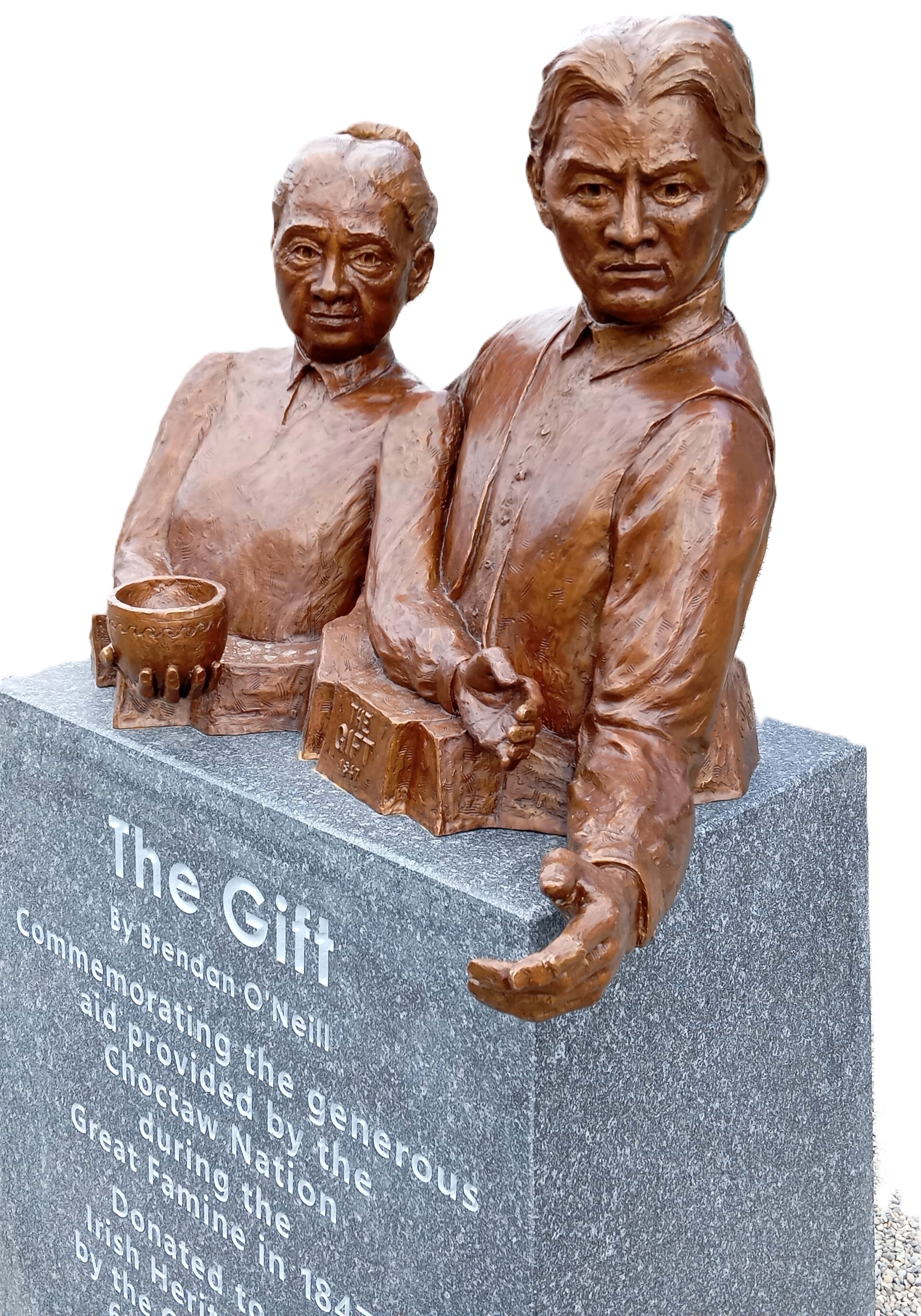
Brendan O’Neill’s “The Gift” Sculpture at the National Famine Museum
